
Oct
Electric vehicles in India have seen a huge jump of 112% in 2024. Over 1.5 million units were sold across the country. This growth is setting the stage for Tesla’s latest move in India.
The Tesla Model Y has received a big upgrade. The Long Range variant now goes 661 km on a single charge. This is a 39-kilometer increase from before. And the best part? The price remains the same, at Rs 67.89 lakh for the Long Range RWD variant.
Tesla made this upgrade in October 2025. This was just a month after starting deliveries in India. The new battery pack is 84.2 kWh, made by LG. It replaces the older 78.1 kWh battery system.
The Tesla Model Y now offers 661 km range in India. And it keeps its original price of Rs 59.89 lakh for the Standard RWD variant. This makes the Tesla Model Y even more appealing to Indian buyers. It’s now one of the longest-range electric SUVs in India.
Key Takeaways
- Tesla Model Y Long Range variant now delivers 661 km WLTP-certified range in India
- The upgrade adds 39 km to the previous 622 km range without any price increase
- New 84.2 kWh battery pack with LG high-density cells powers the enhanced range
- Prices remain at Rs 59.89 lakh for Standard RWD and Rs 67.89 lakh for Long Range RWD
- The quiet update happened in October 2025, one month after India deliveries began
- Tesla Model Y becomes one of the longest-range electric SUVs in the Indian market
Introduction to Tesla Model Y in India
The electric SUV market in India got a big boost when Tesla launched the Model Y in July 2025. This was a key moment for Tesla’s entry into India, a rapidly growing market. Tesla now has showrooms in Mumbai and Delhi, making its advanced electric vehicles available to Indian buyers.
Overview of Tesla’s Impact on Indian Market
When Tesla arrived in India, it sparked a lot of excitement. Over 600 people booked the Model Y soon after it was launched. In September, Tesla delivered more than 60 cars, showing a strong demand for electric vehicles in India.
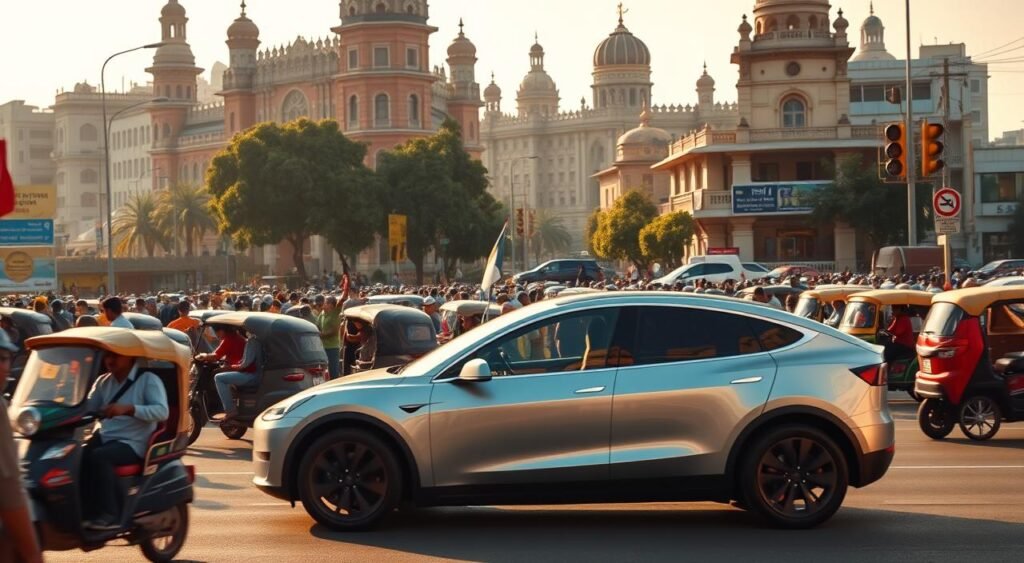
The Model Y comes in two versions for Indian roads. The Standard Range RWD has a 500 km range. The Long Range RWD can go up to 661 km on one charge.
Key Specifications of Tesla Model Y
The Model Y stands out in India’s electric SUV market with its impressive specs:
- Acceleration: 0-100 km/h in 5.6 seconds (Long Range) or 5.9 seconds (Standard)
- Top Speed: 201 km/h for both variants
- Charging Capability: 250 kW fast charging (Long Range) and 175 kW (Standard)
- Range Options: 500 km or 661 km depending on variant
The 661 km Range: What It Means for Indian Consumers
The Tesla Model Y’s 661 km range changes how Indian drivers see Electric Vehicles. It tackles the main worry people have when thinking about electric cars. Now, families can easily go from Mumbai to Pune and back without needing to charge again.
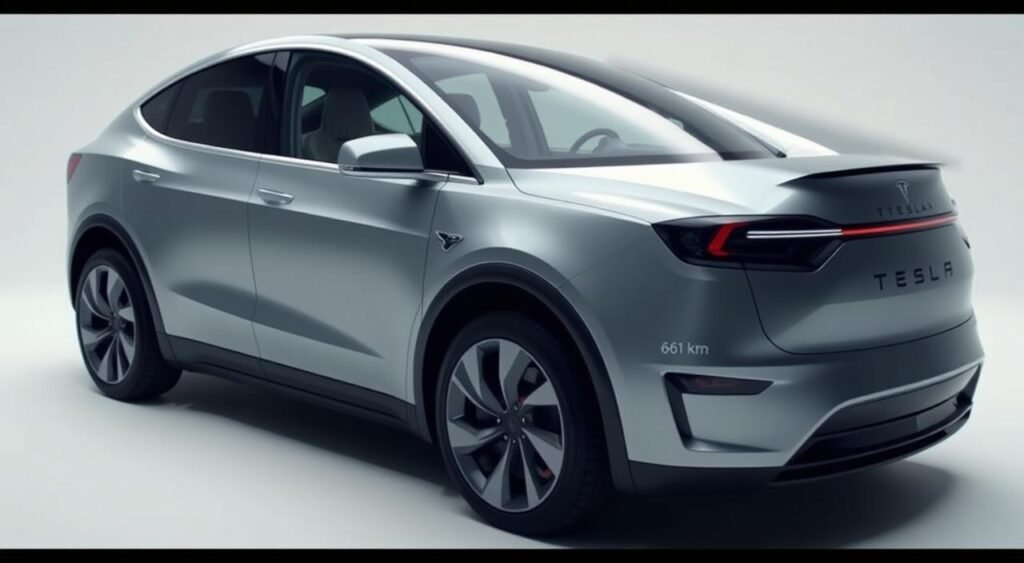
Benefits of an Extended Range
The 661 km Range makes electric cars less intimidating. People in cities like Delhi or Bangalore can drive for a whole week without needing to charge. The Long Range model can charge up to 267 kilometers in just 15 minutes, great for quick stops.
This range is ideal for India’s varied driving conditions. Whether in city traffic or on highways, the Model Y performs well. Its rear-axle electric motor provides smooth acceleration and high efficiency.
Comparison with Other Electric Vehicles
| Model | Range (km) | Fast Charging Speed |
|---|---|---|
| Tesla Model Y | 661 | 250 kW |
| BMW iX1 | 440 | 130 kW |
| Volvo EX30 | 480 | 153 kW |
| Mercedes EQB | 423 | 100 kW |
The Model Y stands out in India’s premium electric car market. Its long range and fast charging make it the top choice for those needing reliable long-distance travel.
Pricing Structure of the Tesla Model Y in India
The Tesla Model Y offers great value in India with its current prices. It comes in two variants, meeting different customer needs. Tesla aims to make luxury electric cars affordable for Indian buyers.
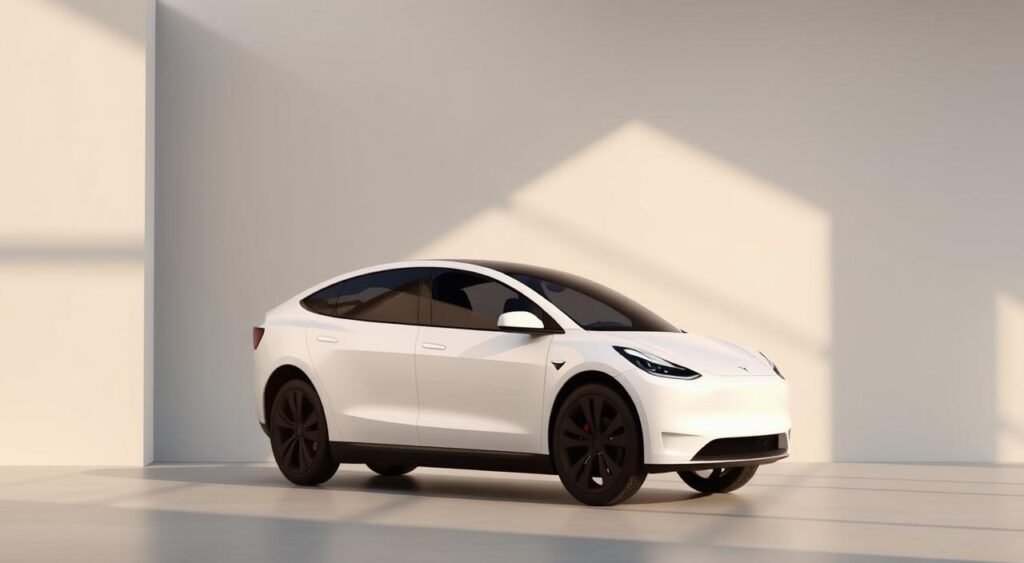
Breakdown of Costs and Financing Options
The Tesla Model Y starts at Rs 59.89 lakh for the Standard Range Rear-Wheel Drive. The Long Range RWD version costs Rs 67.89 lakh ex-showroom. In New Delhi, the base variant’s on-road price is about Rs 68.85 lakh.
| Variant | Ex-showroom Price | Battery Capacity |
|---|---|---|
| Standard Range RWD | Rs 59.89 lakh | 84.2 kWh |
| Long Range RWD | Rs 67.89 lakh | 84.2 kWh |
| Full Self-Driving Add-on | Rs 6 lakh extra | N/A |
Why the Price Remains Competitive
Tesla has upgraded the battery to 84.2 kWh without raising the Model Y’s price in India. This move helps Tesla stay competitive in the premium EV market. Tesla also offers online booking and doorstep delivery, saving on dealership costs.
Features and Specifications of the Tesla Model Y
The Tesla Model Y is a top choice in the Electric SUV market in India. It combines advanced technology with luxury comfort. This makes it a standout in the industry.
Interior and Comfort
Inside the Tesla Model Y, you’ll find a modern and spacious cabin. The 15.4-inch front touchscreen controls most of the car’s functions. Rear passengers get their own 8-inch screen for entertainment and climate control.
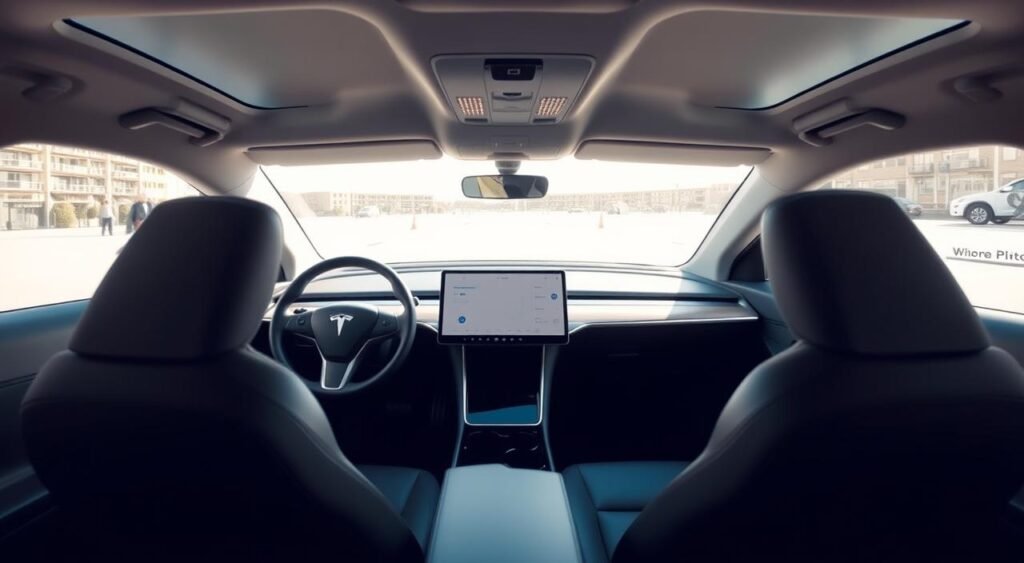
The car focuses on comfort with features like ventilated and heated front seats. The rear seats offer heating and power-folding for more space. A panoramic glass roof adds natural light, making every drive feel open.
There are five USB Type-C ports, each providing 65W output. This keeps your devices charged on long trips across India.
Safety Features and Ratings
Safety is a key part of the Tesla Model Y’s design. It has earned top safety ratings worldwide. This is thanks to its advanced protection systems.
| Safety Feature | Description |
|---|---|
| Autopilot System | Eight cameras provide 360-degree visibility |
| Airbag Protection | Front, side, and curtain airbags throughout cabin |
| Collision Avoidance | Automatic emergency braking and blind spot monitoring |
| Structural Design | Reinforced battery architecture for impact protection |
The Technology Behind the Tesla Model Y
The Tesla Model Y is a big step forward in electric cars for India. It has advanced battery systems and fast charging. This makes it a great choice for those who want long drives without losing speed.
Battery Technology and Charging Infrastructure
The Long Range model has an 84.2 kWh battery pack. It’s made by LG and is very efficient. This helps it go up to 661 km on a single charge.
The Standard model has a 60-64 kWh battery pack. It’s perfect for daily trips.
Tesla made the Model Y to work well with many charging options in India. It can charge up to 250 kW at Tesla Superchargers and other places. This means you can quickly add a lot of range during short stops.
Performance and Efficiency
The Long Range Model Y has a 299-horsepower electric motor. It goes from 0 to 100 km/h in just 5.6 seconds. This shows how electric cars can be both fast and efficient.
The car’s energy management system helps it use power wisely. It adjusts the motor and regenerative braking for better range and quick acceleration when you need it.
Environmental Impact of the Tesla Model Y
The Tesla Model Y is a key player in making India’s cars greener. It has no tailpipe emissions, which helps clean the air in cities like Delhi and Mumbai. These cities often have too much pollution. The Model Y also supports a wider goal of making transportation more sustainable.
How Electric Vehicles Contribute to Sustainability
Electric cars like the Tesla Model Y are changing how we think about cars. They don’t emit carbon dioxide when you drive them, which is great for crowded cities. EVs are 60% cleaner than gas cars, even when you consider how the electricity is made.

The Model Y now has a bigger battery pack. It can go 661 kilometers on one charge. This means you need to charge it less often, which saves energy for everyone in India.
| Environmental Metric | Tesla Model Y | Conventional SUV |
|---|---|---|
| Annual CO2 Emissions | 0 kg (direct) | 4,600 kg |
| Air Pollutants | Zero tailpipe | NOx, PM2.5, CO |
| Energy Efficiency | 120 MPGe | 25 MPG |
Tesla’s Commitment to Green Energy
Tesla is all about being green, from making cars to making energy. Their factories use more and more clean energy. In India, Tesla wants to work with green energy companies to make sure charging stations use clean power.
Customer Reviews and Feedback
Early adopters in India have shared their thoughts on the Tesla Model Y. This has given valuable insights to those thinking of buying it. With over 600 bookings and 60 deliveries in September 2025, feedback shows both excitement and practical thoughts on its performance in India.
User Experiences with Range and Performance
The Tesla Model Y now has a 661 km range in India. This has impressed early owners who travel a lot between cities. They say the long range makes long trips on Indian highways worry-free.
Drivers also love how fast it goes from 0-100 km/h and its top speed of 201 km/h. They say it’s a big improvement from traditional luxury sedans.
Performance consistency is a big plus in reviews. Owners like that both variants drive the same, so there’s no difference in the driving experience.
Common Concerns from Indian Buyers
Price is a big worry for many in India. The Long Range variant costs Rs 67.89 lakh. Buyers wonder if it’s worth it for their first luxury electric vehicle.
Some concerns include:
- Charging infrastructure availability in tier-2 cities
- Service center accessibility across different states
- Battery performance during extreme Indian summer temperatures
- Resale value in the developing EV market
Despite these worries, the improved EV range has helped address previous concerns. It makes electric vehicles more appealing for Indian roads.
The Future of Electric Vehicles in India
India’s electric vehicle market is at a turning point. Tesla’s entry through Mumbai and Delhi showrooms shows strong growth. The Model Y’s 600+ bookings show Indian buyers are eager for premium Electric Vehicles.
This move is more than just luxury car sales. It’s a big change in India’s transportation and sustainability.
Government Policies and Incentives
The Indian government is pushing for more EVs. State governments don’t charge registration fees or road taxes for electric cars. The FAME II scheme gives subsidies from ₹10,000 to ₹1.5 lakh, based on battery size.
India aims to put charging stations every 25 kilometers on highways. This will help with range anxiety.
Predictions for EV Adoption Rates
Experts say India’s EV sector will grow a lot in the next decade. Better infrastructure and lower prices make Electric Vehicles more appealing to buyers.
| Year | Projected EV Sales | Market Share | Charging Stations |
|---|---|---|---|
| 2024 | 1.5 million | 8% | 12,000 |
| 2026 | 3.2 million | 15% | 25,000 |
| 2030 | 10 million | 30% | 80,000 |
Tesla’s 661 km range shows Electric Vehicles can be practical in India. As battery tech gets better and costs drop, more people will be able to buy them.
Comparison with Tesla’s Competitors
The Tesla Model Y is up against tough competition in India’s luxury electric SUV market. Many top brands have entered the market with their electric cars. They all aim to win over buyers who care about the environment.
The fight is about who can offer the longest range, fastest charging, and the best price. This is what Indian consumers look for.
Key Players in the Indian EV Market
India’s luxury electric SUV market has some big names. The BMW iX1 shows off German engineering with a range of about 440 kilometers. Volvo’s EX30 appeals to those who love eco-friendly cars with Scandinavian style and a 480-kilometer range.
Mercedes-Benz has the EQB, which offers three rows of seats and a range of about 420 kilometers. Each brand has its own strengths.
BMW is all about driving fun, Volvo focuses on safety, and Mercedes-Benz is known for luxury. Prices range from Rs 66 lakhs to Rs 77 lakhs for these models.
Differentiating Factors of the Tesla Model Y
The Tesla Model Y has a standout feature: its range of 661 kilometers. This beats all its competitors in the luxury electric SUV market. It can charge up to 267 kilometers in just 15 minutes, thanks to its 250 kW fast charging.
Tesla’s global tech system is another big plus. The Full Self-Driving option, available for Rs 6 lakh extra, offers advanced autonomous tech. The price hasn’t changed even with battery upgrades, making the Tesla Model Y a great deal for luxury electric car buyers.
Conclusion: Is the Tesla Model Y Worth It for Indian Consumers?
The Tesla Model Y now offers 661 km range in India at Rs 67.89 lakh for the Long Range variant. This shows Tesla gets what the Indian market wants. The extended range tackles a major worry for EV buyers in India – running out of charge on long trips.
With 250 kW fast charging and premium features, the Model Y is a top choice in luxury EVs. It’s both practical and luxurious.
Final Thoughts on Value for Money
Tesla kept the price the same but upgraded the battery. This makes the Model Y more appealing to Indian buyers. The 661 km range is better than most electric vehicles in India today.
Premium features like autopilot and over-the-air updates add value. The minimalist interior also justifies the price. For those looking for a luxury EV that works in real life, the Model Y is a great choice.
The Future of Tesla in India
So far, the market response is positive with over 600 bookings. Tesla keeps improving its products without raising prices. This strategy could help Tesla grow in India’s premium EV market.
The 661 km range upgrade is perfect for Indian driving and long trips. As charging infrastructure grows, Tesla is ready to take advantage of the electric shift.
FAQ
What is the new WLTP-certified range of the Tesla Model Y Long Range in India?
The Tesla Model Y Long Range now has a 661 km WLTP-certified range in India. This is 39 km more than the previous 622 km claim. The upgrade comes from a new 84.2 kWh battery pack with LG-made high-density cells, replacing the older 78.1 kWh/79 kWh pack.
How much does the Tesla Model Y cost in India after the range upgrade?
Despite the big battery upgrade, prices stay the same. The Standard RWD variant costs Rs 59.89 lakh, and the Long Range RWD variant costs Rs 67.89 lakh (ex-showroom). In New Delhi, the Long Range model costs about Rs 68.85 lakh on the road.
What are the charging capabilities of the Tesla Model Y Long Range?
The Long Range variant can charge up to 267 km in 15 minutes with 250 kW fast charging. The Standard variant charges at 175 kW. Both can use Tesla Superchargers and third-party charging points in India.
How does the Tesla Model Y compare to other Electric SUVs in India?
The Model Y’s 661 km range is better than competitors like the BMW iX1, Volvo EX30, and Mercedes EQB. Its fast charging and range make it a top choice in the Indian market.
What are the performance specifications of the Tesla Model Y variants?
The Long Range variant goes from 0-100 km/h in 5.6 seconds. The Standard variant takes 5.9 seconds. Both have a top speed of 201 km/h. The Long Range has a 299hp rear-axle-mounted electric motor.
What is the Full Self-Driving (FSD) package, and how much does it cost?
Tesla’s Full Self-Driving package costs Rs 6 lakh extra. It offers advanced autopilot features. But, full autonomous driving may need regulatory approval in India.
How has the market responded to Tesla’s entry into India?
The Tesla Model Y has been well-received, with over 600 bookings and 60 deliveries in September 2025. This shows strong interest in premium Electric Vehicles in India.
What are the key interior features of the Tesla Model Y?
The Model Y has a 15.4-inch front touchscreen and an 8-inch rear touchscreen. It has ventilated, heated, and power-adjustable front seats. It also has heated rear seats, a panoramic glass roof, and 19-inch Crossflow alloy wheels.
How does the Tesla Model Y contribute to Sustainability?
The Model Y’s electric drivetrain produces no tailpipe emissions, reducing air pollution in Indian cities. The new battery pack and Tesla’s renewable energy efforts support sustainable transport in India.
Where can Indian customers purchase and service the Tesla Model Y?
Tesla opened showrooms in Mumbai and Delhi in July 2025. Customers can book online and get doorstep deliveries, making it easy for luxury buyers across India.
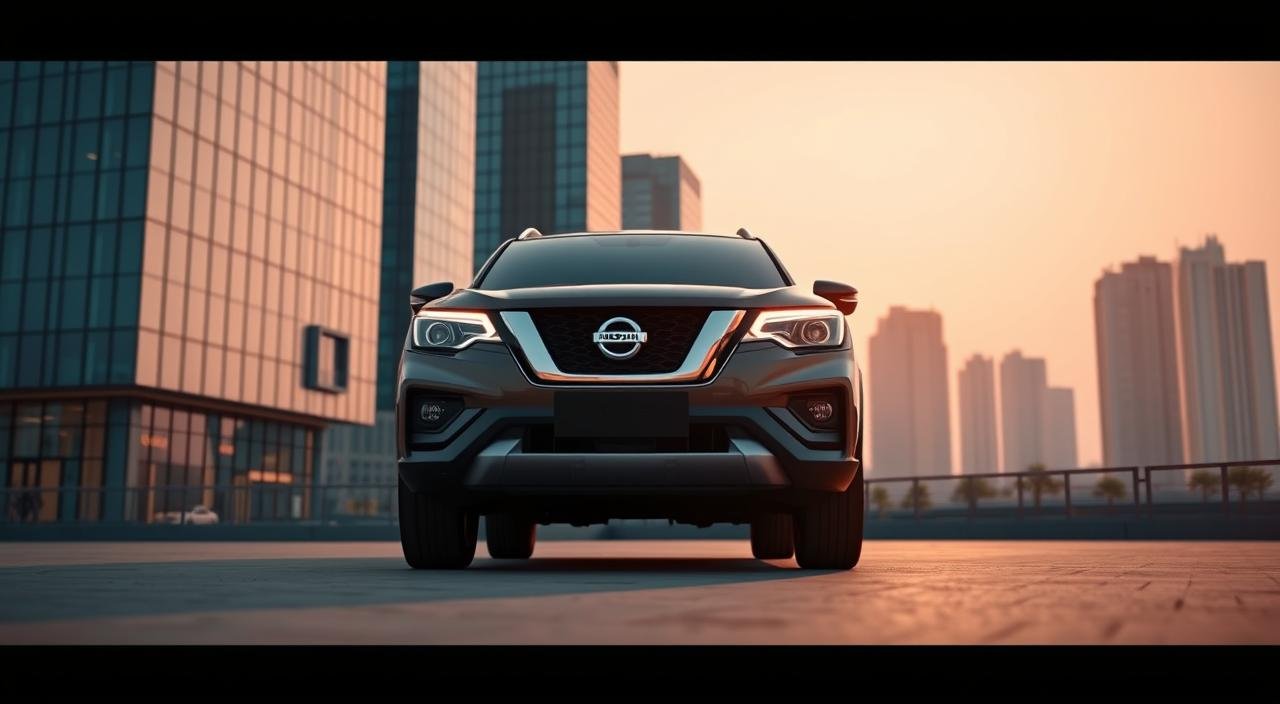
Oct
Nissan’s share in India’s car market has plummeted by 93% in ten years. Now, they have less than 0.5% of the market. This is a critical moment for Nissan in India.
The Tekton is more than just a new car. It’s a chance for Nissan to regain its footing in India’s competitive market. Set to launch in 2026, it draws inspiration from the Nissan Patrol, known for its ruggedness.
Nissan’s Chennai plant will make the Tekton for both Indian buyers and those abroad. The name, inspired by Greek words for craftsman, shows Nissan’s focus on quality. This car is part of Nissan’s plan to connect global markets while meeting local tastes.
Saurabh Vatsa, Nissan’s India head, sees the Tekton as key to their comeback. Nissan faces tough competition from Hyundai, Maruti Suzuki, and Tata Motors. The compact SUV market is where they can show they’re relevant to Indian buyers.
Key Takeaways
- The Tekton compact SUV launches in 2026 as Nissan’s flagship model for market recovery
- Manufacturing happens at Chennai facility for both domestic and export markets
- Design inspiration comes from the legendary Nissan Patrol SUV
- The vehicle represents Nissan’s second product under its One Car One World strategy
- Nissan currently holds less than 0.5% market share in India after years of decline
- The Tekton name means craftsman in Greek, reflecting engineering excellence
Overview of Nissan’s Current Situation in India
Nissan is at a key moment in India’s car market. It was once a hit with the Micra and Sunny. Now, it’s facing a drop in Nissan India market share and needs to boost its presence in this booming market.
Recent Challenges Faced by Nissan India
Nissan has faced tough times in India. Sales fell after it stopped making the Terrano and Kicks. The number of dealerships went from over 270 in 2018 to about 140 in 2023. Customers are upset because service centers can’t get parts.
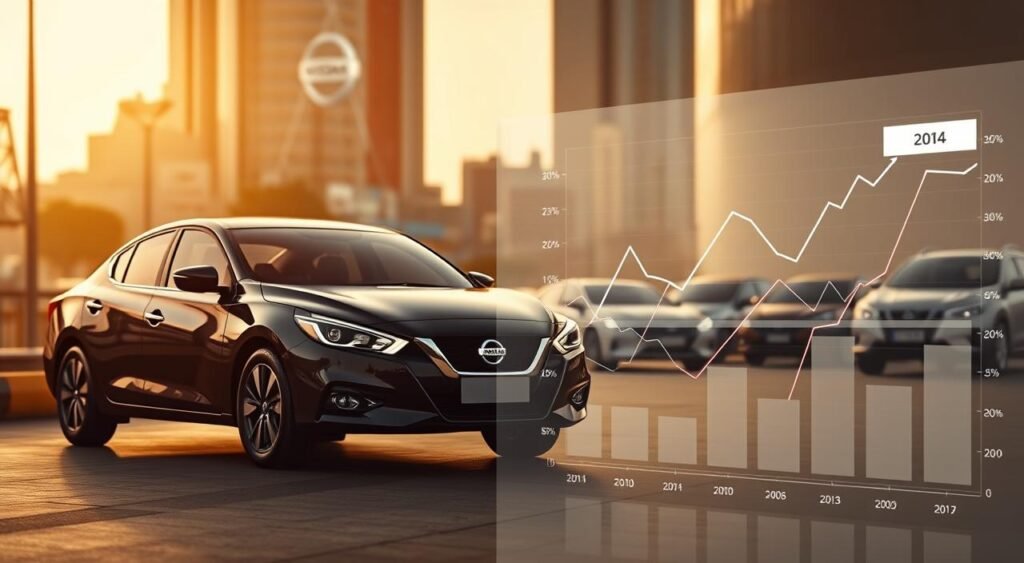
Market Position and Competition
Nissan now has less than 1% of India’s car market. The Magnite SUV is its main seller, with 3,000 units sold each month. Hyundai and Maruti Suzuki lead with over 60% of the market. The X-Trail SUV is pricey at ₹49.92 lakh but sells very few units.
Consumer Sentiment and Brand Perception
Indian car buyers have mixed views on Nissan. They like the Magnite but are worried about service. People are concerned about costs and resale value. The Tekton impact on Nissan could change things if Nissan fixes service issues and offers better support.
Introduction to the Nissan Tekton
Nissan has entered the SUV market with the Tekton. This vehicle aims to boost the brand’s image in the automotive industry in India. It combines bold looks with practical features for Indian buyers. The Tekton takes inspiration from Nissan’s Patrol but fits local tastes and prices.
Specifications and Features of the Tekton
The Tekton looks powerful, thanks to its Patrol-inspired design. Its front has a sculpted bonnet and unique C-shaped LED lights. The front bumper makes it stand out from other SUVs.
The side view shows a strong stance and clean lines. The Double-C door design nods to mountain ranges, like the Himalayas. The rear has a red light bar and C-shaped tail-lamps with the Tekton name on the tailgate. Alfonso Albaisa calls it imposing and stylish, aiming to set new standards in the automotive industry in India.
Target Audience for the Tekton
The Tekton is for urban families wanting a premium SUV without a high price. Young professionals and growing families are its main audience. This shows Nissan’s new approach to meet India’s growing middle class.
Comparison with Nissan’s Previous Models
The Tekton is built on the Renault Duster platform, like the Terrano. Its interior looks more premium than the Duster’s third generation. This shows Nissan’s effort to improve and gain more market share in India’s SUV market.
The Role of Electric Vehicles in Nissan’s Strategy
Electric vehicles are key to Nissan’s plan to turn things around in India. The company is changing its lineup to meet the demand for cleaner, more efficient cars. The Tekton might come with different powertrain options to attract various buyers.
Electrification Trends in India
India’s car market is quickly moving towards electric and hybrid vehicles. Sales of these cars jumped by 49% in 2023. People want cars that save fuel and cost less to run. Cities like Delhi, Mumbai, and Bangalore are leading this change.
The Tekton could lead the way with advanced powertrain options. This would put Nissan ahead of its competitors.
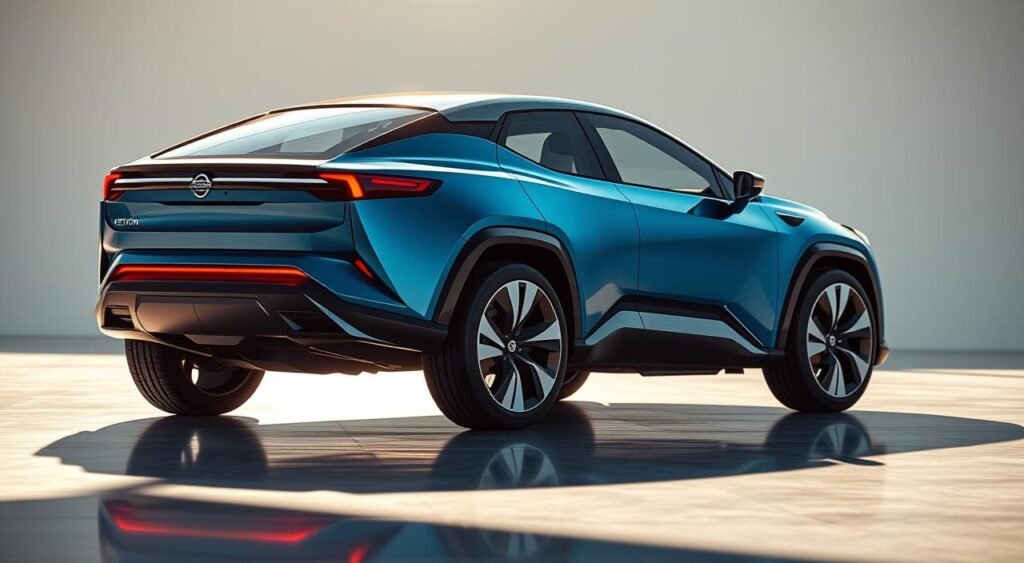
The Tekton as an Electric Vehicle
The Tekton might have a petrol engine or a hybrid system. A hybrid version would make Nissan competitive with Maruti Suzuki Grand Vitara and Toyota Urban Cruiser Hyryder. This approach could help Nissan attract both traditional and eco-friendly buyers.
Government Policies Supporting EV Adoption
The Indian government is making electric cars more appealing. The FAME II scheme offers up to ₹1.5 lakh in incentives for electric cars. State governments also offer benefits like waived registration fees and lower road taxes.
These policies are great for the Tekton’s success in the market. If Nissan introduces electric variants, it could really benefit.
Competitive Landscape in the Indian Automobile Market
The compact SUV segment is a hot spot for car makers in India. People want cars that are good for city driving and comfortable on highways. Tekton Nissan India is joining the fray, but it faces tough competition from established brands.
Key Competitors for Nissan India
Several big names lead the compact SUV market. The Hyundai Creta tops the list, selling over 15,000 units every month. The Kia Seltos is close behind, known for its premium features and style.
Maruti Suzuki Grand Vitara uses its wide service network to its advantage. Honda Elevate and Toyota Hyryder focus on reliability.
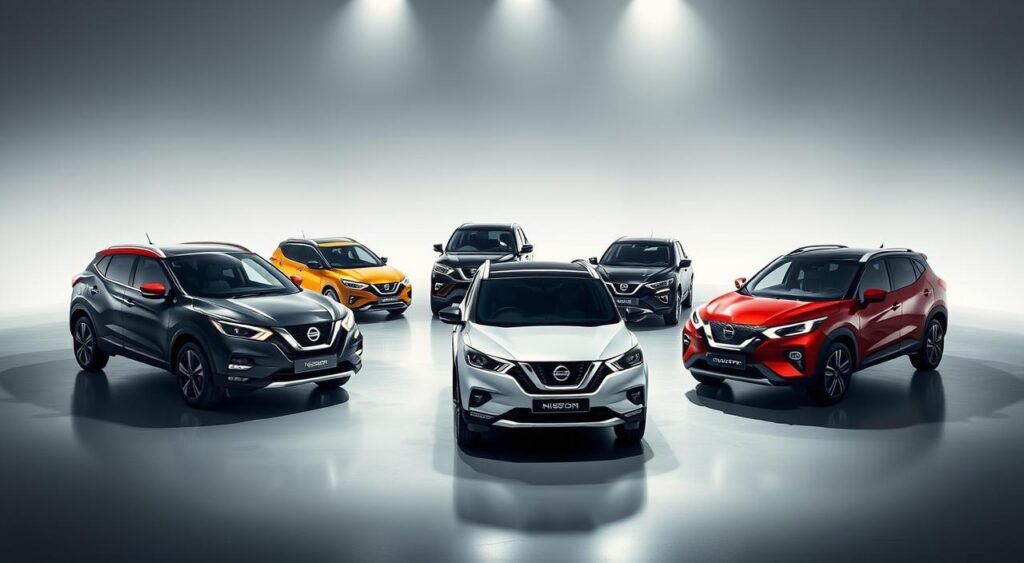
Strategies Employed by Rivals
Competitors use different strategies to attract buyers. Hyundai and Kia offer cars with lots of features like panoramic sunroofs and ventilated seats. Maruti Suzuki focuses on saving money on fuel and maintenance.
Toyota appeals to those who care about the environment with hybrid powertrains.
How the Tekton Stands Against Competitors
The Tekton Nissan India stands out with its true SUV design. It has a strong build and lots of room inside. It’s priced well, making it a good deal compared to others.
But, it doesn’t have a sunroof, which might hurt its sales. Sunroofs are very popular in India.
Marketing Strategies for the Tekton Launch
Nissan aims to make a big splash in India’s C-SUV market with the Tekton. They want to show off their rich history and meet the needs of ambitious buyers. These strategies focus on what Indian customers want, while keeping Nissan’s global image in mind.
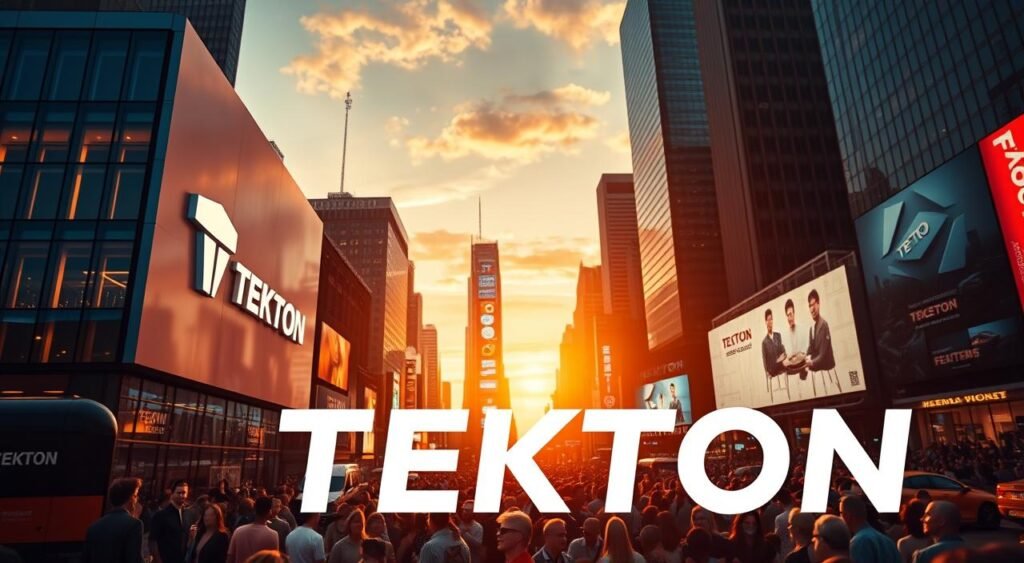
Approaches to Reach Target Consumers
The Tekton’s marketing campaign leans on its Patrol legacy to attract buyers. Nissan is looking at creative professionals and young families. They highlight the car’s global standards, made for Indian roads.
Utilizing Digital Marketing Channels
Digital marketing is key for Nissan’s Tekton. They use:
- Social media campaigns on Instagram and YouTube to show off design
- Virtual showrooms for online exploration
- Targeted ads for urban 25-45 year olds
- Interactive configurators on Nissan India’s website
Collaborations and Partnerships
Strategic partnerships boost the Tekton’s appeal. Nissan teamed up with Renault for cost-effective production in Chennai. This partnership helps keep costs down while keeping quality high.
Nissan also plans to expand its dealer network. They aim to reach more buyers in tier-1 and tier-2 cities. This strategy targets both the domestic market and select export markets.
Customer Feedback and Expectations
Customer feedback is key to the success of new cars. For the Tekton to increase Nissan India market share, it must meet buyer expectations. People have clear ideas about what they want in a car, including features and price.
Insights from Potential Buyers
Indian buyers want top-notch interior features. They look for:
- 10.1-inch infotainment touchscreen with wireless Android Auto and Apple CarPlay
- 7-inch digital instrument cluster for a modern look
- Wireless charging for easy use
- Premium materials and finishes inside
They also like personalizing their cars. The Tekton bonnet lettering is a hit as a way to make the car unique.
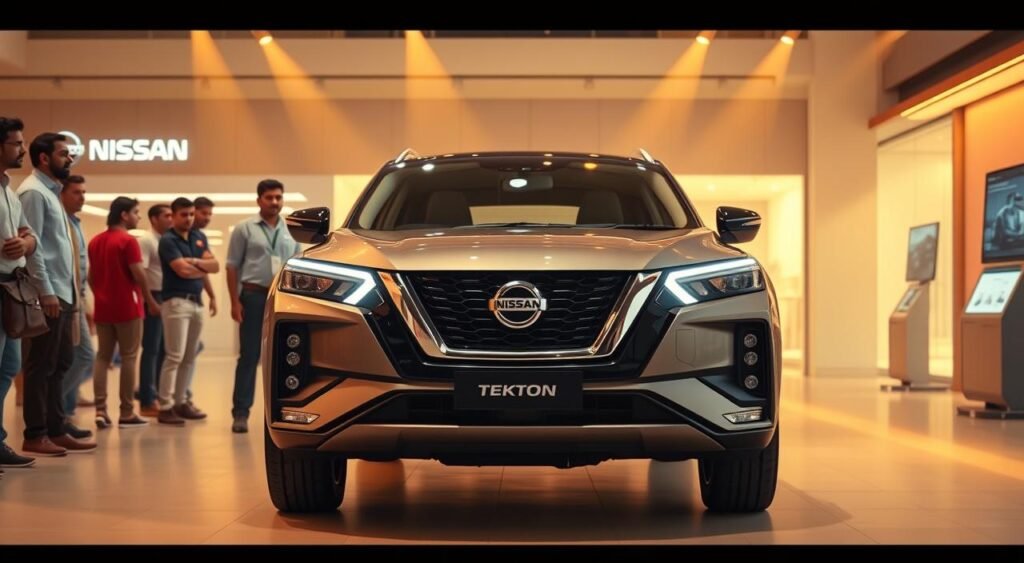
Importance of Customer Reviews
Online reviews and word of mouth are big in India’s car market. What early buyers say about the Tekton will shape opinions. Good feedback on quality, features, and value can help it gain acceptance.
Addressing Common Concerns
Buyers worry about how the Tekton compares to Hyundai Creta and Kia Seltos. It must be seen as a premium car to match its price. Also, making sure there are enough service centers and affordable spare parts is key to growing Nissan India market share.
Dealership Network and Availability
Nissan India aims to strengthen its dealership network across the country. The launch of Tekton in 2026 will need a wider reach to serve tier-2 and tier-3 cities. Chennai will continue to be the main hub for both domestic sales and exports.
Expansion Plans for Nissan in India
Nissan plans to grow its dealership count from 270 to 350 by 2026. The auto industry in India is booming, with smaller cities becoming key markets. New showrooms will open in states like Uttar Pradesh, Gujarat, and Karnataka.
The company is focusing on areas with a growing middle class. These people are looking to buy modern vehicles.
Importance of Service and Maintenance
Service quality is key to keeping customers loyal in India’s competitive auto market. Nissan is addressing service center shortages by opening 100 new workshops. Each will have certified technicians trained in Chennai.
Regular maintenance packages start at ₹15,000 a year for basic coverage.
Strategies to Improve Customer Experience
Digital booking systems let customers schedule service appointments via mobile apps. Pick-up and drop services are available within 15 kilometers of dealerships. Nissan’s turnaround includes 24/7 roadside assistance and extended warranties.
| Service Feature | Current Status | 2026 Target |
|---|---|---|
| Dealership Count | 270 | 350 |
| Service Centers | 180 | 280 |
| Mobile Service Vans | 25 | 75 |
| Customer Response Time | 48 hours | 24 hours |
Financial Implications for Nissan India
The launch of Tekton Nissan India is a big deal for the company. The price of the new model will decide if it can increase Nissan India market share. This is important for Nissan to get back on track in a tough market.
Expected Costs and Benefits of Tekton Launch
The Magnite showed that Nissan can sell well in India with the right price. The Tekton needs to be affordable but also have top features. Making it in Chennai with Renault-Nissan Alliance cuts costs by 15-20%.
Impact on Sales and Revenue Targets
Tekton Nissan India aims to sell 3,000-4,000 units a month to hit revenue targets. This goal is reachable, thanks to the X-Trail’s lesson on pricing. The Tekton could double Nissan India market share to 2.5% in two years.
Long-term Financial Outlook
Setting the Tekton’s price between ₹8-12 lakhs makes it a strong competitor. This price helps Nissan keep profits high while drawing in more buyers. Working with Renault also cuts costs by 30%, making the investment pay off in under three years.
Environmental Impact and Sustainability
The car industry is under pressure to cut its environmental harm. Nissan’s Tekton shows the company’s dedication to green driving. It’s not just about selling cars; it’s about being responsible in India.
Tekton’s Environmental Credentials
The Tekton might have a hybrid engine, which cuts down on emissions. This makes it a leader in car innovation. It’s all about being fuel-efficient and powerful. The Tekton has:
- Less carbon emissions with hybrid tech
- High fuel economy, aiming for 25+ km/l
- Light materials to make the car lighter
- Systems that capture energy through braking
Nissan’s Commitment to Sustainability
Building the Tekton in Chennai shows Nissan’s local focus. It cuts down on emissions and supports the local economy. The factory also uses water recycling and solar power.
Consumer Awareness and Eco-Friendly Practices
Indian buyers are now more aware of the environment. The Tekton’s green features attract them. Nissan teaches people about the benefits of eco-friendly cars, like saving money and being kind to the planet.
Conclusion: Can the Tekton New Success for Nissan India?
The Tekton is a big moment for Nissan India. It enters a market full of rivals like Hyundai Creta and Kia Seltos. Nissan must offer good prices, a strong network, and reliable service to stand out.
A hybrid powertrain could make the Tekton special. This could help it beat other cars.
Summary of Key Points
Nissan India’s future depends on many things. The Tekton has bold design and luxury inside to draw in buyers. Saurabh Vatsa thinks it will help Nissan grow in India.
The SUV has a strong look and wants to challenge the top cars. Alfonso Albaisa says it shows Nissan’s best SUV qualities. Success needs good pricing, positioning, and service.
Final Thoughts on Nissan’s Future
Nissan has a tough fight in India’s car market. It needs to win back trust and beat strong rivals. The Tekton aims to be premium and different with its design.
Nissan wants to give what today’s buyers want without high prices. Success will show in how well Nissan does at every step.
The Road Ahead for the Tekton
The Tekton’s journey in India will test Nissan’s dedication. Early feedback and sales will show if Nissan can turn things around. The SUV must stand out against other cars and find its own place.
Nissan’s growth depends on more dealers and better service. The Tekton is a chance for Nissan to shine in India again.
FAQ
What is the Nissan Tekton and when will it launch in India?
The Nissan Tekton is a compact SUV coming in 2026. It’s part of Nissan’s plan to come back strong in India. This SUV is inspired by the legendary Nissan Patrol and is the second car under Nissan’s One Car One World plan. It will be made in Chennai for both Indian buyers and some exports.
How does the Tekton fit into Nissan’s turnaround strategy for the Indian market?
The Tekton is key to Nissan India’s comeback, says Managing Director Saurabh Vatsa. After losing ground by stopping popular models like the Micra and Terrano, Nissan sees the Tekton as a game-changer. The plan includes more dealerships, better service, and good prices to win back customers.
What are the key design features and specifications of the Tekton?
The Tekton has a bold design inspired by the Patrol. It has a sculpted bonnet, C-shaped LED lights, and a strong front bumper. Its side looks upright with Double-C door accents, and the back has a red light bar and C-shaped tail-lamps.
It will have a big 10.1-inch screen for infotainment, a 7-inch digital display, and wireless charging.
Which competitors will the Tekton face in the Indian automotive industry?
The Tekton will compete in the compact SUV market. It will go up against the Hyundai Creta, Kia Seltos, and others. Its design is more like a traditional SUV, which might appeal to some buyers.
Will the Tekton offer hybrid or electric powertrain options?
Details on the Tekton’s engine are not out yet. But, it might have a petrol engine or a hybrid option. This could make it more appealing to buyers who want efficient cars and care about the environment.
What is Nissan’s current market share and position in India?
Nissan India’s market share is small. The Magnite is doing okay, but the X-Trail is too pricey. Nissan needs to improve its service network to win back customers and boost its reputation.
How will pricing impact the Tekton’s success in India?
Pricing is very important for the Tekton’s success. The Magnite shows that being affordable can help. But, the X-Trail’s high price didn’t work. Nissan needs to find the right price to compete well.
What role does the Renault partnership play in the Tekton’s development?
Nissan’s partnership with Renault helps in making the Tekton. It uses the Renault Duster platform, like the Terrano. This partnership lets Nissan make a premium car without spending too much.
What are the main challenges facing the Tekton launch?
The Tekton faces tough competition and might not have all the features buyers want. It lacks a sunroof, which is popular. Nissan needs to work on its service, pricing, and marketing to succeed.
How does Tekton leadership in the automotive sector view the vehicle’s ?
Alfonso Albaisa sees the Tekton as bold, stylish, and a new standard. Saurabh Vatsa believes it will lead Nissan’s growth in India. It has a strong look, premium interior, and aims to disrupt the market.
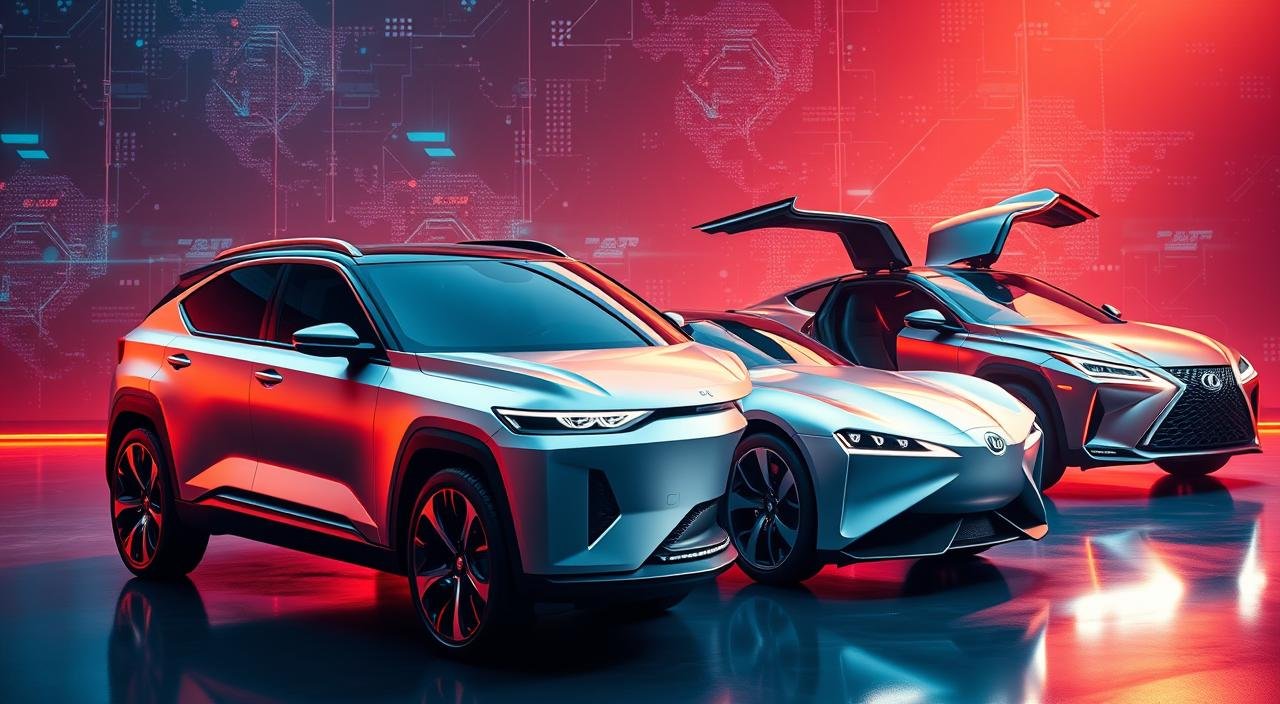
Jul
Can three electric vehicles reshape India’s automotive landscape in a single month? The premium car market stands at a crossroads as July 2025 approaches with game-changing launches.
The Indian automotive scene prepares for a major shift with the arrival of the Kia EV9, MG Cyberster, and Lexus LM EV. These models represent different segments of the electric revolution sweeping through the country’s roads.
The MG Cyberster has captured attention through multiple teasers since early 2025. This electric roadster promises to bring sports car excitement to the growing EV market. Kia builds on its success story after the Carens crossed 200,000 sales units.
Lexus enters the luxury electric space with the LM EV, targeting buyers seeking premium comfort and zero emissions. The brand joins an exclusive club of manufacturers offering vehicles above Rs. 50 lakh with extensive customization options.
Key Takeaways
- Three major electric vehicles launch in India during July 2025
- The Kia EV9 brings family-friendly electric SUV options to Indian roads
- MG Cyberster marks the brand’s entry into the electric sports car segment
- Lexus LM EV targets ultra-luxury buyers with sustainable transportation
- Premium segment offers 130 models with various fuel types and transmissions
- Electric vehicles gain momentum in India’s evolving automotive market
Overview of the July 2025 Car Launches
July 2025 stands as a game-changing month for automotive enthusiasts across India. Three exceptional vehicles are set to transform the luxury electric vehicle landscape. These new car launches India represents a bold step toward sustainable mobility in the premium segment.
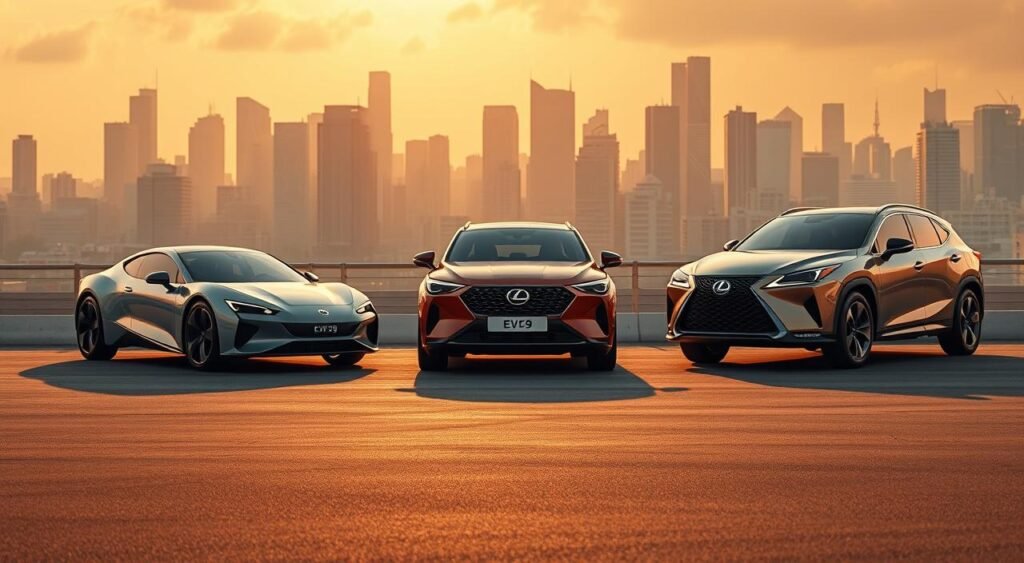
Significance of New Car Models
The arrival of the Kia EV9, MG Cyberster, and Lexus LM EV signals a new era for Indian buyers. These vehicles bring cutting-edge technology and zero-emission driving to the luxury market. The expansion of charging infrastructure makes these electric vehicles more practical than ever before.
Major automakers are investing heavily in India’s electric future. Audi recently installed over 5,500 charging points across the country. This infrastructure growth supports the adoption of premium electric vehicles.
Anticipated Market Trends
Consumer preferences are shifting rapidly toward sustainable luxury. Affluent buyers now prioritize environmental consciousness alongside premium features. The latest car releases reflect this changing mindset perfectly.
- Growing demand for zero-emission luxury vehicles
- Increased investment in charging infrastructure
- Rising interest in advanced driver assistance systems
- Preference for spacious, tech-laden interiors
What to Expect from These Launches
Each model brings unique strengths to the Indian market. The Kia EV9 offers family-friendly electric mobility. The MG Cyberster delivers sporty performance with environmental responsibility. The Lexus LM EV redefines luxury transportation with its exceptional comfort and advanced features.
These launches align perfectly with India’s push toward cleaner transportation. Buyers can expect competitive pricing strategies and attractive financing options. The timing coincides with government initiatives supporting electric vehicle adoption.
Introducing the Kia EV9
The Kia EV9 stands as a groundbreaking addition to the expanding lineup of electric vehicles in India. This flagship electric SUV marks Kia’s ambitious entry into the premium electric segment, building on the brand’s proven success with popular models like the Carens. As one of the most anticipated upcoming car models, the EV9 promises to redefine luxury electric mobility with its cutting-edge technology and spacious design.
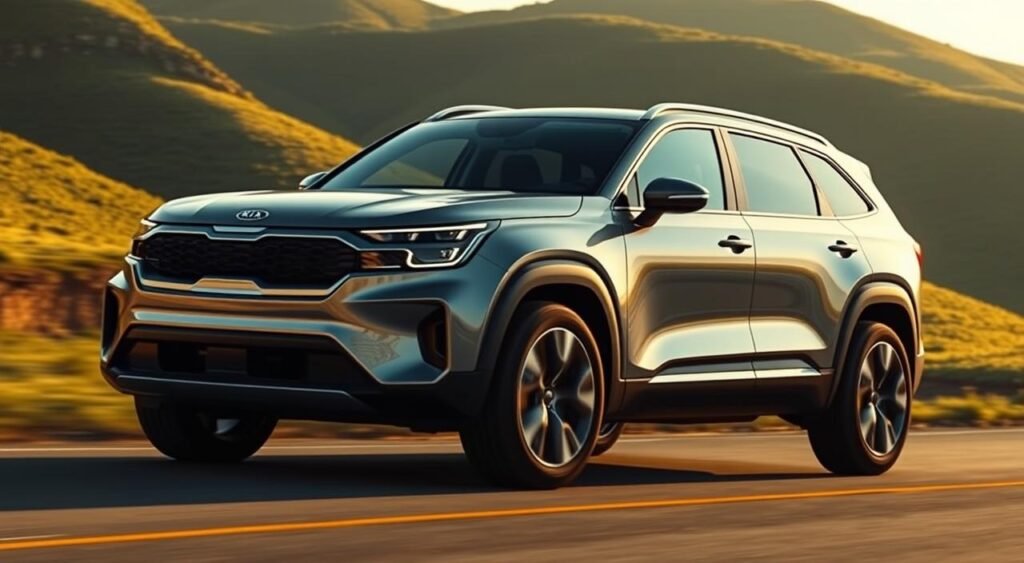
Features and Specifications
The Kia EV9 delivers impressive performance through its advanced electric drivetrain system. Key specifications include:
- Three-row seating configuration accommodating up to seven passengers
- Long-range battery capacity exceeding 300 miles on a single charge
- Ultra-rapid charging capability reaching 80% in under 25 minutes
- Dual-motor all-wheel drive option for enhanced performance
- Advanced driver assistance systems with Level 2 autonomous features
Design and Aesthetics
The EV9 showcases bold SUV proportions combined with futuristic design elements. Its aerodynamic profile enhances efficiency while maintaining a commanding road presence. The vehicle features distinctive LED lighting signatures and a minimalist grille design that emphasizes its electric nature. Inside, premium materials and a panoramic display create a luxurious atmosphere that rivals traditional luxury brands.
Pricing and Availability
Expected to launch in July 2025, the Kia EV9 will be positioned above Rs. 50 lakh in the Indian market. This competitive pricing strategy places it within reach of premium SUV buyers looking to transition to electric vehicles in India. Pre-bookings are anticipated to open in early 2025, with deliveries beginning shortly after the official launch.
Spotlight on the MG Cyberster
The MG Cyberster stands as a groundbreaking addition to electric vehicles in India, marking the country’s first electric roadster. This two-seater convertible represents a bold move by MG to expand beyond traditional vehicle segments. The sports car combines cutting-edge technology with zero-emission performance, appealing to enthusiasts seeking exclusive driving experiences.

Innovative Technology and Performance
The MG Cyberster features an advanced electric powertrain that delivers sports car acceleration without compromising environmental responsibility. Its battery management system optimizes power distribution for both performance and range. The vehicle accelerates from 0-60 mph in under 3 seconds, placing it among the fastest electric vehicles in India.
| Performance Specs | MG Cyberster |
|---|---|
| Power Output | 536 HP |
| 0-60 mph | 2.8 seconds |
| Top Speed | 124 mph |
| Battery Range | 273 miles |
Interior Comfort and Amenities
Inside the MG Cyberster, drivers find a cockpit designed for the digital age. Premium materials blend with advanced technology throughout the cabin. Key features include:
- Triple digital displays for comprehensive vehicle information
- Premium leather seats with heating and ventilation
- Advanced sound system with noise cancellation
- Wireless smartphone integration
Competitive Pricing Strategies
MG positions the Cyberster strategically within the premium electric vehicle market. While exact pricing remains unconfirmed, industry estimates suggest a starting price around ₹70-80 lakhs. This pricing makes it more accessible than imported electric sports cars while maintaining exclusivity. As hybrid cars 2025 gain popularity, the MG Cyberster offers pure electric performance at a competitive price point.
The Lexus LM EV: A Luxury Experience
The Lexus LM EV represents a groundbreaking addition to India’s premium electric vehicle market. This ultra-luxury multi-purpose vehicle combines Lexus’s renowned craftsmanship with cutting-edge electric technology. Among the latest car releases scheduled for July 2025, the LM EV stands out as an exclusive offering designed for those who demand exceptional comfort and sustainable mobility.
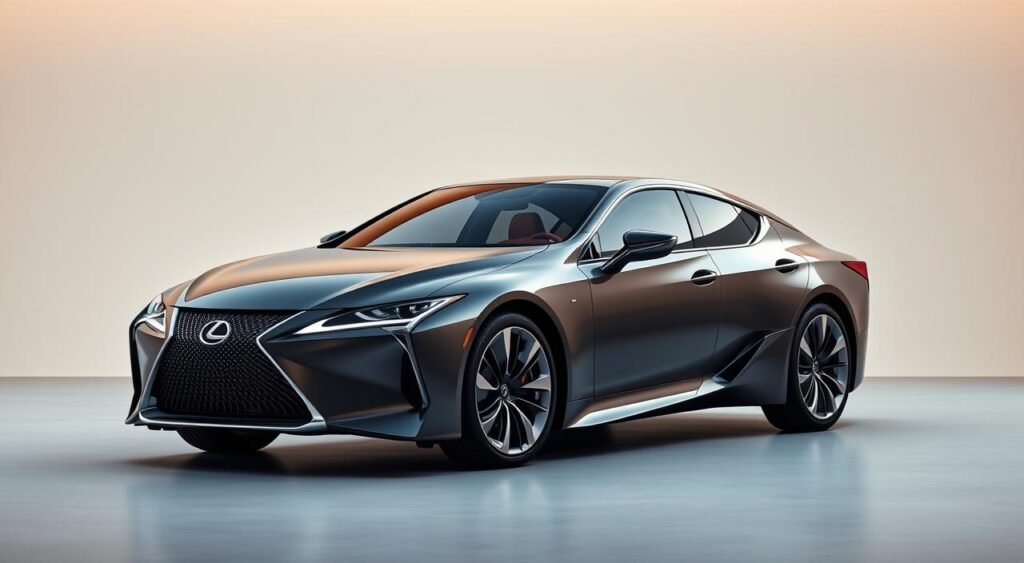
Exceptional Design Elements
The Lexus LM EV showcases a sophisticated exterior that embodies the brand’s distinctive spindle grille design adapted for electric propulsion. Its spacious interior features premium materials including hand-stitched leather, genuine wood trim, and ambient lighting systems. The vehicle offers flexible seating configurations with either four or seven seats, each providing first-class comfort levels.
Advanced Safety Features
Safety technology in the Lexus LM EV includes comprehensive protection systems designed to safeguard all occupants. The vehicle incorporates ten airbags, pre-collision systems with pedestrian detection, lane departure alert with steering assist, and adaptive cruise control. Structural reinforcements use high-strength steel to enhance crash protection while maintaining the vehicle’s electric efficiency.
Target Audience and Market Positioning
The Lexus LM EV targets a selective customer base in India’s luxury segment. Primary buyers include business executives requiring premium transportation, five-star hotel chains seeking exclusive guest vehicles, and affluent families prioritizing comfort in their upcoming car models. Positioned above Rs. 50 lakh, this electric MPV competes in the ultra-luxury category where exclusivity matters as much as performance.
Electric Vehicles in India: A Growing Trend
The automotive landscape in India is experiencing a remarkable transformation as electric vehicles gain unprecedented momentum. Environmental awareness and technological progress are reshaping consumer preferences, making EVs an increasingly attractive option for Indian buyers. The shift represents more than just a trend; it signals a fundamental change in how Indians think about personal transportation.
Factors Driving EV Adoption
Several key factors contribute to the surge in electric vehicles in India. Rising fuel costs make EVs economically appealing, with electricity costing significantly less than petrol or diesel per kilometer. Environmental concerns resonate strongly with urban consumers who witness air pollution firsthand. Battery technology improvements now offer ranges exceeding 400 kilometers on a single charge, addressing earlier range anxiety issues.
Infrastructure development plays a crucial role. Companies like Audi have installed over 5,500 charging points across the nation, making long-distance EV travel practical. Premium buyers particularly embrace electrification, viewing sustainable mobility as a status symbol alongside luxury.

Government Initiatives and Support
The Indian government actively promotes EV adoption through comprehensive policy measures. The FAME II scheme provides substantial subsidies for electric vehicle purchases, reducing upfront costs for consumers. GST rates on EVs stand at just 5%, compared to 28% for conventional vehicles. State governments offer additional incentives including road tax exemptions and registration fee waivers.
Comparison to Traditional Fuel Vehicles
| Aspect | Electric Vehicles | Traditional Fuel Vehicles |
|---|---|---|
| Running Cost (per km) | ₹0.80 – ₹1.20 | ₹3.50 – ₹5.00 |
| Maintenance | 40% lower | Standard costs |
| Tax Benefits | 5% GST + incentives | 28% GST |
| Environmental Impact | Zero tailpipe emissions | High carbon footprint |
The comparison clearly favors EVs for cost-conscious and environmentally aware buyers. New car launches India increasingly feature electric powertrains, reflecting this market shift. The luxury segment above ₹50 lakh particularly embraces electrification, with buyers prioritizing sustainability alongside performance. As battery costs decline and charging infrastructure expands, the gap between EVs and traditional vehicles continues to narrow, making hybrid cars 2025 and pure electric options increasingly mainstream choices.
Consumer Preferences in the Indian Market
The Indian automotive market is experiencing a significant shift in buyer preferences, especially as the Top 3 Cars Launching in India in July 2025 reflect changing consumer priorities. Today’s car buyers seek vehicles that balance environmental consciousness with premium features and cutting-edge technology.
Demand for Sustainability
Indian consumers are embracing eco-friendly vehicles at an unprecedented rate. The latest car releases show manufacturers responding to this demand by offering electric powertrains without sacrificing performance. Premium buyers in the Rs. 50 lakh+ segment now actively seek vehicles that reduce their carbon footprint while maintaining the luxury experience they expect.
Trends in Luxury Vehicles
The luxury car segment has transformed dramatically in recent years. Buyers now prioritize:
- Advanced driver assistance systems
- Personalized interior customization
- Seamless smartphone integration
- Premium sound systems
Mercedes-Benz, BMW, and Audi have successfully introduced electric models that prove sustainability and luxury can coexist. These upcoming car models demonstrate manufacturers understand Indian buyers want exclusive ownership experiences alongside environmental responsibility.
Insights from Recent Surveys
Market research reveals fascinating patterns in buyer behavior. Brand reputation remains crucial, but after-sales service quality has become equally important. The July 2025 launches align perfectly with survey findings showing consumers want vehicles that combine innovative technology, sustainable powertrains, and prestigious brand heritage.
Comparison of the Kia EV9, MG Cyberster, and Lexus LM EV
July 2025 brings three distinct premium electric vehicles to the Indian market, each targeting specific buyer needs. The Kia EV9, MG Cyberster, and Lexus LM EV showcase different approaches to electric mobility above the Rs. 50 lakh price point. Let’s examine how these models stack up against each other.
Performance Metrics
Each vehicle excels in its own category. The Kia EV9 delivers impressive range figures suitable for family road trips, with an estimated 450-500 km on a single charge. Its dual-motor setup provides adequate power for a three-row SUV.
The MG Cyberster takes a different route, prioritizing acceleration and handling dynamics. This electric roadster reaches 0-100 km/h in under 4 seconds, appealing to driving enthusiasts who value performance over practicality.
The Lexus LM EV focuses on refined comfort rather than outright speed. Its smooth acceleration and whisper-quiet cabin create an executive-level transportation experience unmatched by its competitors.
Price Range
Pricing reflects each model’s market positioning. The Kia EV9 enters as the most accessible option, expected between Rs. 60-70 lakh. The MG Cyberster commands a premium for its sports car credentials at Rs. 75-85 lakh. The Lexus LM EV sits at the top, likely exceeding Rs. 1.5 crore for its ultra-luxury MPV configuration.
Target Demographics
The Kia EV9 attracts affluent families seeking spacious, eco-friendly transportation. The MG Cyberster appeals to successful professionals wanting weekend thrills. The Lexus LM EV serves business executives and celebrities requiring mobile office spaces with chauffeur-driven comfort.
Expert Opinions on the Upcoming Models
The automotive industry is buzzing with excitement about the new car launches India has scheduled for July 2025. Industry analysts predict these three premium models will reshape the luxury vehicle segment. The strategic timing aligns perfectly with India’s expanding EV charging infrastructure and growing environmental consciousness among consumers.
Automotive Analysts’ Insights
Leading automotive experts from *J.D. Power* and *CRISIL* express optimism about market reception. The Kia EV9’s seven-seat configuration addresses a gap in electric vehicles in India. The MG Cyberster brings sports car excitement to the EV segment. The Lexus LM EV sets new luxury benchmarks.
Market analysts project these launches will accelerate EV adoption rates by 15-20% in the premium segment during 2025-2026.
Consumer Expectations
Indian buyers prioritize specific features in their purchase decisions:
- Reliable charging infrastructure access
- Strong resale value retention
- Comprehensive warranty coverage
- Local service network availability
Recent surveys by *Deloitte* indicate 78% of potential buyers consider charging convenience their primary concern when evaluating electric vehicles in India.
Key Challenges for Manufacturers
Manufacturers face several hurdles in establishing market presence. Import duties on completely built units remain high at 60-100%. Building robust service networks requires significant investment. Parts availability concerns persist among potential buyers.
Pricing strategies must balance competitiveness with profitability. Customer education about EV technology benefits remains crucial for success in new car launches India witnesses throughout 2025.
Conclusion: The Future of Cars in India
The automotive industry in India stands at a critical turning point as the top 3 cars launching in India in July 2025 signal a new era of electric mobility. The Kia EV9, MG Cyberster, and Lexus LM EV represent more than just new vehicle options. They showcase the industry’s commitment to sustainable transportation and premium experiences. Each model brings unique strengths to the market, from the Kia EV9’s spacious family-friendly design to the MG Cyberster’s sporty appeal and the Lexus LM EV’s ultra-luxury positioning.
Highlights of the Top 3 Models
These upcoming car models demonstrate distinct approaches to electrification. The Kia EV9 targets families seeking practical electric SUVs with advanced technology. The MG Cyberster appeals to enthusiasts wanting performance-oriented electric sports cars. The Lexus LM EV caters to luxury buyers demanding exceptional comfort and prestige. All three vehicles feature cutting-edge battery technology, impressive range capabilities, and connected car features that align with modern consumer expectations in the Rs. 50 lakh and above segment.
Final Thoughts on the EV Landscape
Electric vehicles in India are transitioning from niche products to mainstream options. Government policies supporting EV adoption, improving charging infrastructure, and growing environmental awareness drive this shift. The premium segment leads this transformation, setting benchmarks for technology and features that will eventually reach more affordable segments. Local manufacturing initiatives and partnerships between global and Indian companies promise to make electric mobility more accessible across price points.
What to Watch for in 2025 and Beyond
The automotive landscape will see rapid changes as manufacturers introduce diverse electric models across segments. Expect locally assembled EVs to reduce costs and improve affordability. Battery technology advances will extend driving ranges while reducing charging times. Competition among brands will benefit consumers through better features and competitive pricing. Infrastructure development will accelerate, with charging networks expanding to tier-2 and tier-3 cities. These upcoming car models mark just the beginning of India’s electric vehicle revolution, promising exciting developments for environmentally conscious buyers.
FAQ
What are the top 3 cars launching in India in July 2025?
The three major launches scheduled for July 2025 are the Kia EV9 (flagship electric SUV), MG Cyberster (India’s first electric roadster), and Lexus LM EV (luxury electric MPV). All three models represent the premium segment above Rs. 50 lakh and showcase the shift toward electric mobility in India’s luxury car market.
When will the new car launches India take place exactly?
While all three models are confirmed for July 2025 launch, specific dates haven’t been announced yet. The MG Cyberster has been teased multiple times throughout 2024, building anticipation for its arrival. Manufacturers typically announce exact launch dates closer to the event through their official channels.
What are the latest car releases featuring in terms of technology?
These upcoming car models feature cutting-edge electric powertrains, advanced battery management systems, rapid charging capabilities, and sophisticated infotainment systems. The Kia EV9 offers three-row seating with long-range capability, the MG Cyberster delivers sports car performance with zero emissions, and the Lexus LM EV includes premium safety features like collision avoidance technology.
How do these electric vehicles in India compare to traditional fuel options?
Electric vehicles offer lower running costs, reduced maintenance requirements, and zero tailpipe emissions compared to traditional petrol and diesel vehicles. With companies like Audi adding over 5,500 EV charging points across India, the infrastructure gap is closing rapidly. The Rs. 50 lakh+ segment currently offers 130 models with various fuel types, giving buyers extensive choice.
What makes these hybrid cars 2025 models special for the Indian market?
While these three models are fully electric rather than hybrid, they represent the evolution of sustainable mobility in India. Each targets specific buyer needs – the Kia EV9 for families requiring space, the MG Cyberster for driving enthusiasts, and the Lexus LM EV for executive transportation. Their launch coincides with improved charging infrastructure and growing environmental consciousness among luxury car buyers.
What is the expected price range for these vehicles?
All three models will be positioned in the premium segment above Rs. 50 lakh, though exact pricing hasn’t been announced. The Kia EV9 is expected to be competitively priced within the premium electric SUV category, while the MG Cyberster and Lexus LM EV will command premium pricing befitting their exclusive positioning and advanced features.
Which charging infrastructure supports these new EVs?
India’s EV charging infrastructure has expanded significantly, with companies like Audi installing 5,500+ charging points nationwide. These vehicles support rapid charging technology, allowing convenient long-distance travel. The government’s supportive policies, including subsidies and reduced taxation, further facilitate EV adoption across major cities and highways.
Who is the target audience for these luxury electric vehicles?
The Kia EV9 targets affluent families seeking spacious, eco-friendly transportation. The MG Cyberster appeals to driving enthusiasts and collectors wanting exclusive performance vehicles. The Lexus LM EV specifically caters to business executives, luxury hotel chains, and ultra-high-net-worth individuals prioritizing ultimate comfort and prestige in their mobility choices.
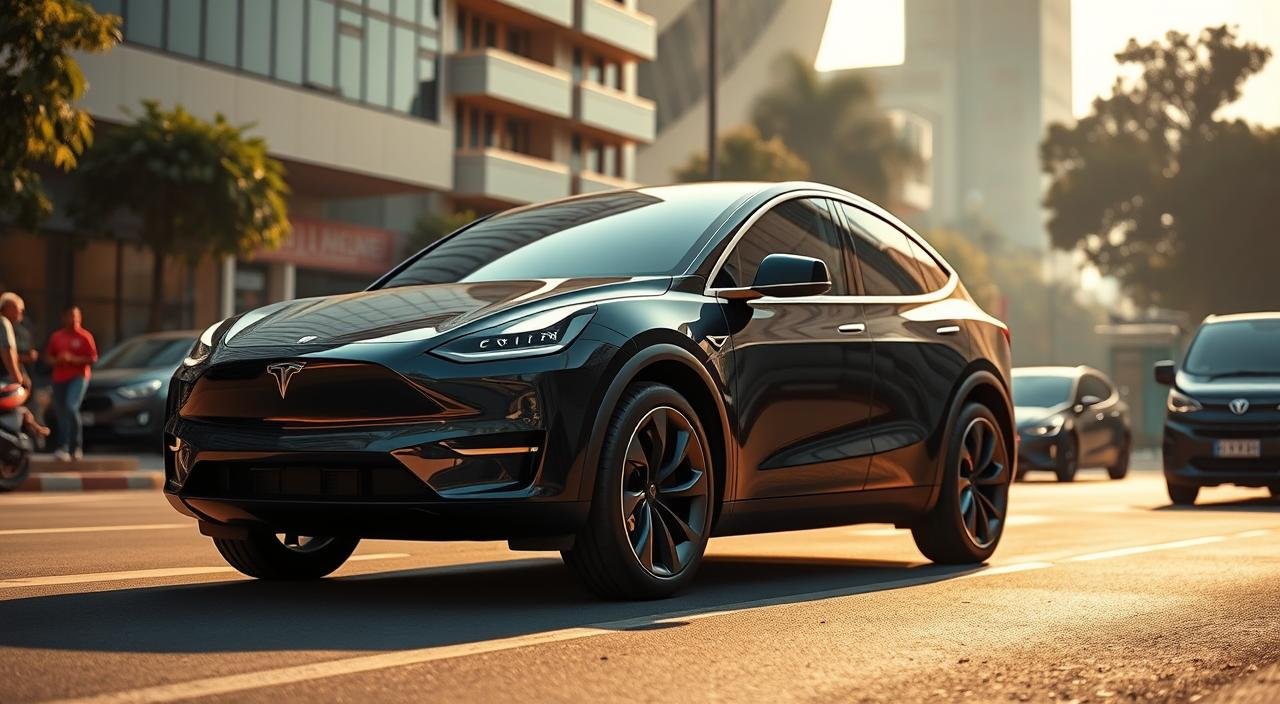
May
The Tesla Model Y, a highly awaited electric SUV, has been seen on Indian roads. This has sparked rumors of an upcoming launch. A test mule was spotted on the Mumbai-Pune Expressway, causing excitement among Tesla fans and those looking to buy it.
The 2025 Tesla Model Y, known as Juniper, is expected to have new design features. It will have C-shaped LED taillights and a battery that lasts up to 526 km on one charge. As Tesla’s first vehicle in India, it promises to change the electric car market with its advanced tech and luxury features.
The Indian government is pushing for more electric cars, and Tesla’s arrival is timely. But, Tesla faces challenges like setting up the right infrastructure and understanding what Indian buyers want. So, the big question is: Will the Tesla Model Y soon be available in India?
Key Takeaways
- A camouflaged Tesla Model Y test mule was spotted on the Mumbai-Pune Expressway
- The updated 2025 model features design changes and a long-range battery
- The Model Y could be the first Tesla vehicle to launch in India
- Tesla’s entry into the Indian market is highly anticipated by electric vehicle enthusiasts
- The company must navigate infrastructure challenges and consumer preferences to succeed in India
Recent Sightings of the Tesla Model Y in India
The Tesla Model Y has been spotted in India, exciting electric car fans. It was seen on the Mumbai-Pune Expressway, a busy highway. This suggests Tesla is planning to expand in India.
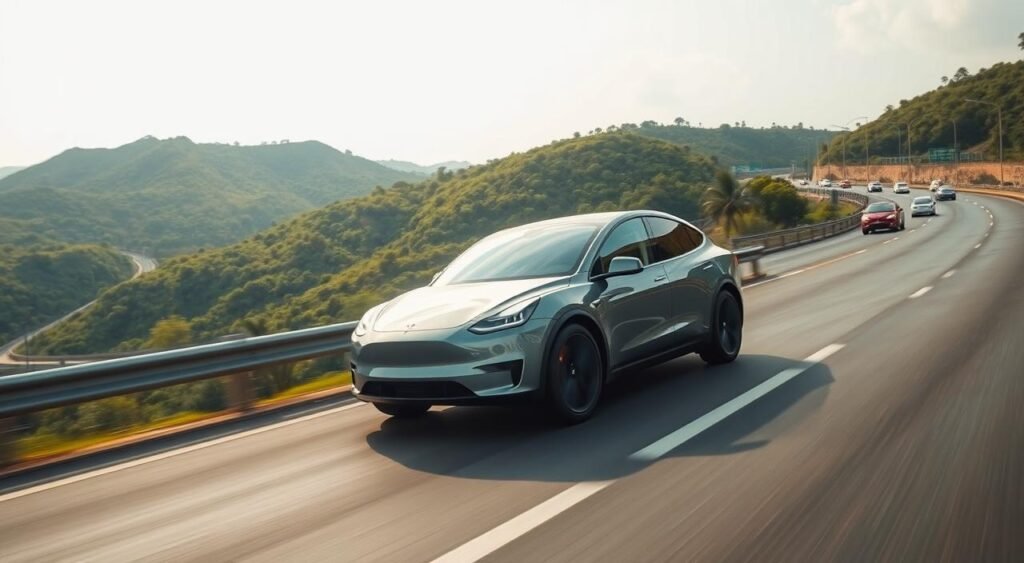
These sightings have sparked talk about the Model Y’s launch in India. The car had a red number plate, showing it was for testing or delivery. This means Tesla is getting ready to enter the Indian market, with the Model Y at the forefront.
Location of the Spotted Vehicle
The Tesla Model Y was mainly seen on the Mumbai-Pune Expressway. This is a key route between two big cities in India. Seeing it here shows Tesla is testing the car on real roads to make sure it works well in India.
Features Noticed During the Sightings
People have noticed some important features of the Tesla Model Y. These include:
- C-shaped LED taillights
- A long, curved roofline
- Multiple twin-spoke alloy wheels finished in black
- Tesla’s signature glass roof
These features show Tesla’s commitment to quality and style. As Tesla grows in India, the Model Y’s sightings are making everyone more excited for its launch.
Tesla’s Expansion Plans for the Indian Market
As Tesla’s entry into India gets closer, the company is making big moves. The Tesla Model Y has been spotted on Indian roads. This shows Tesla is ready to make a big splash in the world’s fourth-largest car market.
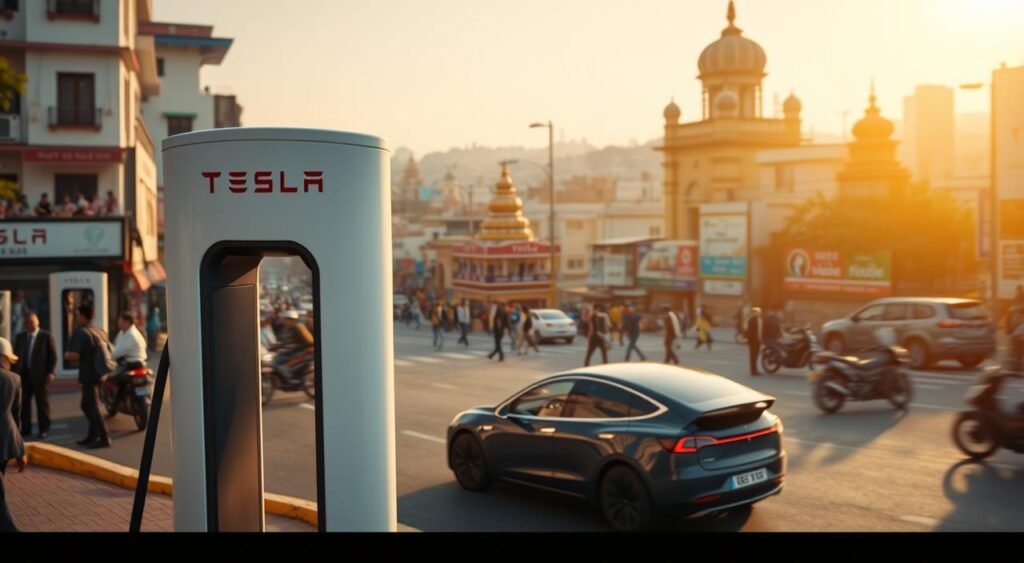
Tesla’s presence in India is growing, but it’s just starting. The company is hiring important people to build a strong base. They’re working on a good charging infrastructure, marketing plans, and customer service in cities like Mumbai and Delhi.
Tesla has also found its first showroom in India. They’ve leased a big space in Mumbai’s Bandra Kurla Complex (BKC). This place is known for its high-end businesses, perfect for showing off Tesla’s electric cars.
Anticipated Timeline for New Launches
The exact time for Tesla’s new cars in India is not known. But experts think Tesla is getting ready to launch soon. The Model Y sightings and Tesla’s hiring and building plans hint at an upcoming launch.
As Tesla enters the Indian market, it will face challenges. But one thing is sure: Tesla’s arrival will shake up the electric car scene. It will help India move towards cleaner, greener transportation.
Significance of the Model Y for Tesla
The Tesla Model Y is a key addition to Tesla’s lineup. It fills the gap between the Model 3 sedan and the Model X SUV. As electric vehicle demand grows, the Model Y is a strategic move to increase Tesla’s market share.
The Model Y’s importance goes beyond just sales. It showcases Tesla’s latest tech advancements. With its range, performance, and features, it shows Tesla’s commitment to innovation in electric vehicles.
Key Features of the Model Y
- Tesla all-wheel-drive system for better traction and stability
- 15.4-inch Tesla touchscreen infotainment system for easy controls
- 8-inch rear passenger screen for entertainment and climate control
- Advanced Driver Assistance System (ADAS) for safety
- Ventilated seats for comfort in any weather
- Wireless charging for easy device power management
These features, along with the Model Y’s impressive performance, make it a top choice. It accelerates from 0-96 kmph in 4.6 seconds and has a range of 526 km on a single charge.
How the Model Y Fits into Tesla’s Portfolio
The Model Y is a vital part of Tesla’s lineup. It offers a versatile and spacious option. It combines the best of Tesla’s sedans and SUVs, meeting the growing demand for electric SUVs.
Its shared platform with the Model 3 also helps Tesla. It allows for streamlined production and lower costs. This makes the Model Y more affordable, helping Tesla reach more customers and grow the electric vehicle market.
Market Competition in the Electric Vehicle Segment
When Tesla enters the Indian EV market, it will face tough competition. Many car makers, both local and international, have already launched electric cars in India. The Tesla Model Y, with its special features, could be a standout.
Key Competitors for Tesla in India
Some big Tesla competitors in India include:
- Tata Motors – Nexon EV and Tigor EV
- MG Motor – ZS EV
- Hyundai – Kona Electric
- Mahindra – eVerito and e2o Plus
These companies have a strong presence in the Indian EV market. They offer electric cars at various price points and segments.

What Sets the Model Y Apart
The Tesla Model Y has several Model Y advantages that could make it stand out:
- Range: It has a long driving range of up to 525 km on a single charge, beating most rivals.
- Performance: Its dual-motor all-wheel drive and quick acceleration make for an exciting drive.
- Technology: Tesla’s advanced Autopilot system and over-the-air updates are unmatched in the EV world.
- Brand Appeal: Tesla’s strong brand and focus on innovation could attract Indian buyers seeking a premium EV.
In the growing Indian EV market, the Model Y’s mix of range, performance, tech, and brand could help it gain a big share. This is despite the presence of established competitors.
Indian Consumer Preferences for Electric Vehicles
The Indian car market is changing, with more people wanting electric vehicles (EVs). Indian EV consumer preferences are influenced by a growing concern for the environment, government support, and the latest technology.
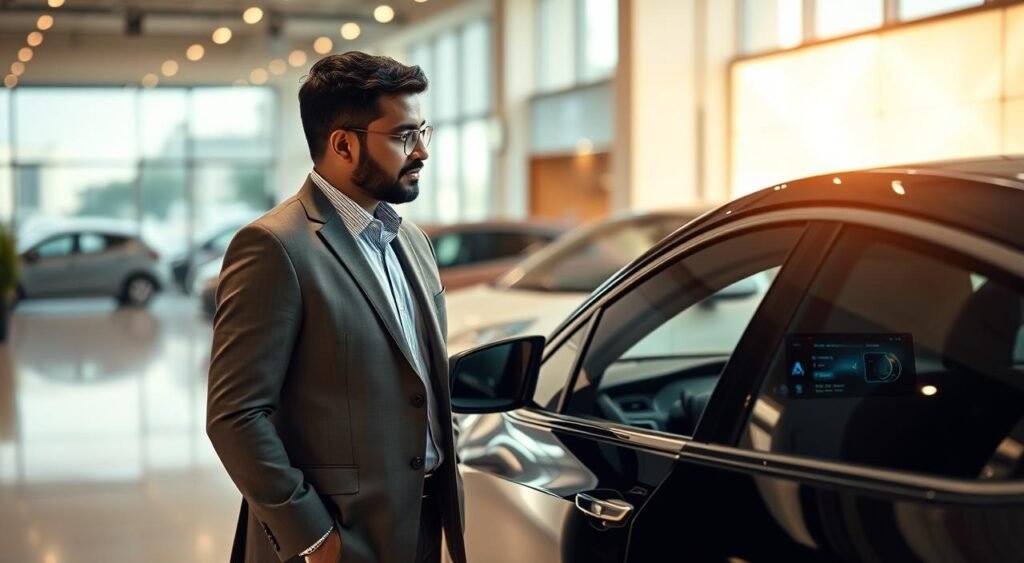
Recent studies have shown what Indian buyers look for in EVs. Here’s a table with the top things they consider:
| Factor | Importance |
|---|---|
| Driving Range | High |
| Charging Infrastructure | High |
| Price | Medium |
| Brand Reputation | Medium |
| Advanced Features | Low |
Trends in EV Adoption Across India
EV adoption trends in India are growing, with big cities leading the way. Delhi, Mumbai, and Bengaluru are at the forefront, thanks to local policies and more charging spots.
Factors Influencing Customer Decisions
Indian buyers focus on what works best and is affordable. They worry about how far an EV can go on one charge. They also look for easy-to-find charging spots.
Government help, like tax breaks and subsidies, makes EVs more appealing. As prices drop and more models come out, more people will choose EVs.
Government Regulations Supporting EVs
The Indian government sees electric vehicles as key to a greener future. It has set up policies and incentives to boost their use. These steps are vital for the auto industry’s future in India, including Tesla’s plans.
Incentives for Electric Vehicle Purchases
The government offers many perks to encourage buying electric cars. These are part of the Faster Adoption and Manufacturing of Electric Vehicles (FAME) scheme. Here are some benefits:
- Income tax deductions of up to Rs. 1.5 lakh on interest paid on loans for EV purchases
- GST reduction from 12% to 5% on EVs
- Exemption from road tax and registration fees in select states
Also, the government aims to set up 2,636 charging stations in 62 cities by 2025. This will make electric cars more accessible.
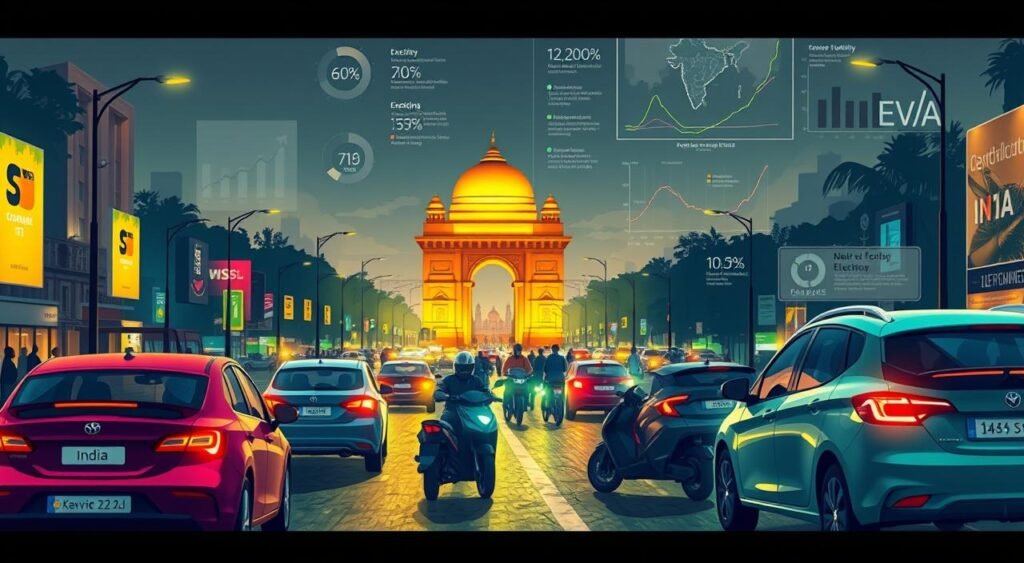
Impact of Policy Changes on Tesla’s Strategy
The supportive policies in India could help Tesla enter the market smoothly. The government’s push for electric cars could boost demand. Tesla will also benefit from the growing number of charging stations.
But, Tesla must adjust its plans to meet Indian tastes. This might include:
- Localizing production to reduce costs and qualify for more incentives
- Introducing smaller, more affordable models for the local market
- Working with local partners to handle regulations and build a strong supply chain
| Policy/Incentive | Impact on Tesla |
|---|---|
| FAME Scheme | Increased affordability of EVs, boosting demand |
| GST Reduction | Lower prices for consumers, making Tesla models more competitive |
| Charging Infrastructure | Improved convenience for Tesla owners, addressing range anxiety |
As the Indian government focuses on EVs, Tesla’s entry could be perfect. It can take advantage of the supportive policies and growing interest in electric cars.
Expert Opinions on the Spotted Model Y
The Tesla Model Y has been spotted in India, causing a buzz among car lovers and experts. People are excited about the possible launch of this electric vehicle. Analysts are discussing what this could mean for Tesla in India.
Rajesh Kumar, a top car analyst at TechSight Research, thinks the Model Y could change India’s electric car scene. “The Model Y could make a big impact with its advanced tech, long range, and stylish look,” Kumar said. “Tesla needs to tackle local production and pricing issues to succeed in this growing market.”
Industry Insights on the Launch
Experts say the Tesla Model Y’s launch in India could affect the car industry a lot. Nikhil Patel, a Tesla India expert, points out a few important factors for success:
- Producing cars locally to make them cheaper and more accessible
- Building more charging stations for long trips
- Adjusting the car to fit Indian roads and what people want
Predictions for Tesla’s Market Performance
As Tesla prepares to enter India, analysts are watching closely. Anita Desai, a MarketPulse research analyst, thinks Tesla’s success will depend on several things:
“Tesla faces challenges in India, like dealing with complex rules and finding local suppliers,” Desai said. “But if they use their tech skills, appeal, and focus on customers, they could win a big part of India’s electric car market.”
The car world is waiting to see what happens with the Tesla Model Y in India. One thing is sure: the electric car revolution is here, and Tesla is key to its future.
Consumer Anticipation and Reactions
The Tesla Model Y’s recent appearance in India has excited many. Electric vehicle fans and possible buyers are buzzing on social media. They can’t wait for the Model Y’s launch, sharing their hopes and dreams.
The buzz around Tesla India shows the brand’s growing appeal. More people want electric cars that perform well in India.
Online Buzz and Social Media Reactions
Tesla’s name is known for innovation and top tech. This has caught the eye of Indian buyers. They’re eager to try Tesla’s latest models.
On social media, people are talking about the Model Y. They’re guessing about its price, features, and when it will arrive. It’s a place for Tesla fans to share their excitement and chat.
What Potencial Buyers Want from the Model Y
Buyers are looking forward to the Model Y with high hopes. They want a car that goes far on one charge and is fast. The car’s tech, like its entertainment system and Autopilot, also interests them.
People also value Tesla’s focus on safety and quality. This has set high standards for what they expect from electric cars in India.
FAQ
Where was the Tesla Model Y spotted in India?
What new features were noticed on the spotted Tesla Model Y?
What steps has Tesla taken to expand its presence in the Indian market?
What are the key features of the Tesla Model Y that set it apart from competitors?
What are the trends in electric vehicle adoption across India?
How have government regulations and incentives supported the adoption of electric vehicles in India?
What are industry experts saying about the Tesla Model Y’s launch in India?
How have the recent sighting of the Tesla Model Y in India been received?
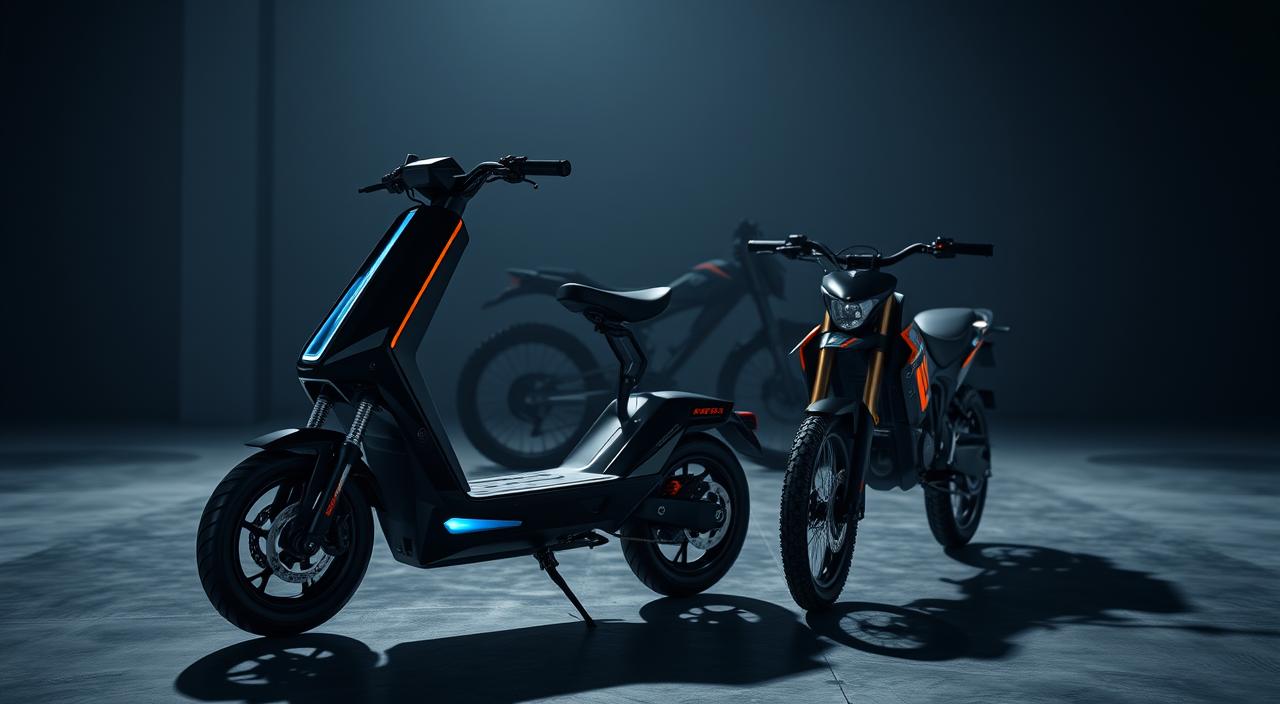
Mar
Are you ready to see the future of electric vehicles in India? Ultraviolette, a new startup in Bengaluru, has introduced two exciting products. They are the Tesseract electric scooter and the Shockwave enduro e-bike.
The Ultraviolette Tesseract scooter can go up to 261 km on a single charge. It has a 6kWh battery pack and a dynamic regen system. It can reach 125 kmph and goes from 0 to 60 kmph in just 2.9 seconds. This scooter promises an exciting ride.
The Ultraviolette Shockwave enduro e-bike is for those who love off-road adventures. It has a peak power of 14.5PS and can go 165 km on a charge. It accelerates as fast as the Tesseract, making every ride thrilling.
Key Takeaways
- Ultraviolette launches the Tesseract electric scooter and Shockwave enduro e-bike in India
- Tesseract offers a range of up to 261 km and a top speed of 125 kmph
- Shockwave delivers a peak power of 14.5PS and a range of 165 km
- Both vehicles boast an impressive 0-60 kmph acceleration time of 2.9 seconds
- Introductory prices start at Rs 1,20,000 for the Tesseract and Rs 1,49,999 for the Shockwave
Introduction to Ultraviolette Vehicles
Ultraviolette Automotive is a startup from Bengaluru changing the Indian EV market. They offer electric scooters and bikes that are fast and green. Their goal is to meet the needs of city commuters, helping India move towards electric vehicles.
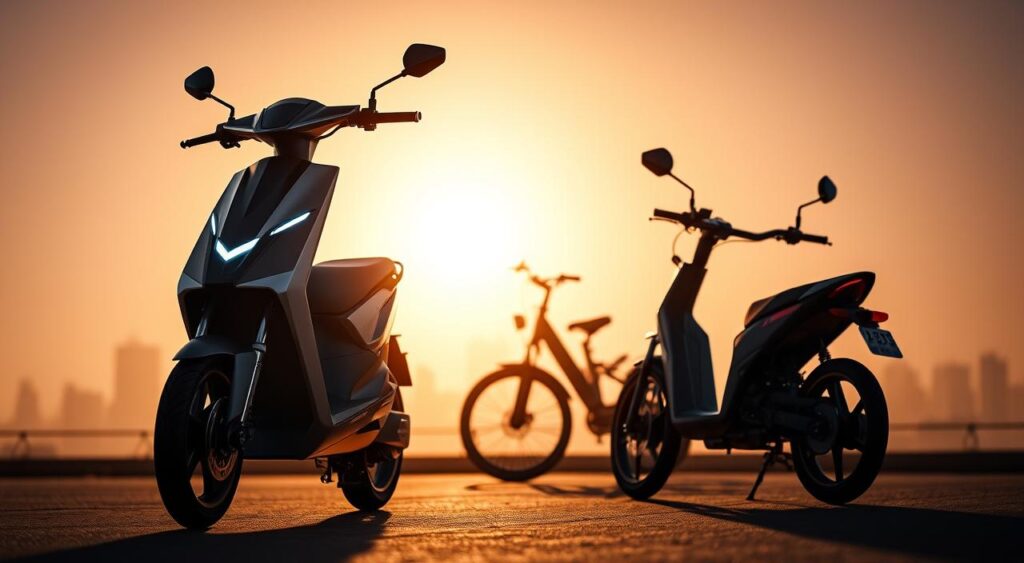
By 2028, Ultraviolette plans to introduce 10 new electric bikes and scooters. The Tesseract scooter and Shockwave motorcycle start at ₹1.45 lakh and go up to ₹1.75 lakh. This makes them affordable for many looking for green transport.
Overview of Ultraviolette
Ultraviolette Automotive wants to grow fast by entering different parts of the Indian electric two-wheeler market. They are working on five vehicle platforms:
- F Series (performance bikes)
- S Series (scooters)
- L Series (lightweight bikes)
- X Series (multi-terrain bikes)
- B Series (cruiser long-range segment)
They plan to sell 1 lakh units a year for the next three to four years. They also aim to add 12 new products to their lineup.
Mission and Vision of the Brand
Ultraviolette Automotive wants to make India’s transport greener by introducing electric vehicles. They dream of a future where electric bikes and scooters are the norm. This will help cut down on pollution and make the air cleaner.
They focus on making their products better and introducing new tech. This will make electric vehicles more appealing to everyone. Ultraviolette is set to be a big player in India’s electric vehicle market.
Discovering the Ultraviolette Tesseract Scooter
The Tesseract electric scooter from Ultraviolette is a standout in India’s e-mobility scene. It combines sleek design, impressive performance, and smart features for a smooth ride.

Design Features and Aesthetics
The Tesseract has a futuristic design that stands out. It features dual projector headlamps, floating DRLs, and a premium finish. The 7-inch TFT screen adds a modern touch, giving riders easy access to info and connectivity.
Performance and Specifications
The Tesseract is powered by an electric motor that produces up to 20bhp. It can hit speeds of 125 kmph, perfect for city and highway rides. With a 6kWh battery, it offers an IDC range of up to 261 km, reducing the need for frequent charging.
The Tesseract comes in three battery options to meet various needs:
- 6 kWh battery with a peak power output of 15 kW and an IDC range of 261 km
- 3.5 kWh battery with a peak power output of 10 kW and an IDC range of 162 km
- 5 kWh battery with a peak power output of 15 kW and an IDC range of 220 km
Smart Technology Integration
The Tesseract is packed with smart features. It has onboard navigation for easy route finding. Wireless phone charging keeps riders connected without battery worries. It also has advanced safety tech for peace of mind.
The Tesseract starts at Rs 1.2 lakh for the first 10,000 buyers. The price goes up to Rs 1.3 lakh for the next 50,000. The final price is Rs 1.45 lakh. You can pre-book it for Rs 999, with deliveries starting in early 2026.
The Ultraviolette Shockwave Enduro E-bike
Ultraviolette has introduced the Shockwave, a street-legal off-road e-bike. It promises an exhilarating ride on various terrains. Built on a lightweight platform, it combines cutting-edge tech with rugged durability for adventure lovers.
Key Features and Build
The Shockwave enduro e-bike has a 14.5bhp electric motor and 505Nm of torque. It has a 4kWh battery pack for a range of 165 km on a single charge. It goes from 0-60 kph in just 2.9 seconds, making for an adrenaline-pumping ride.
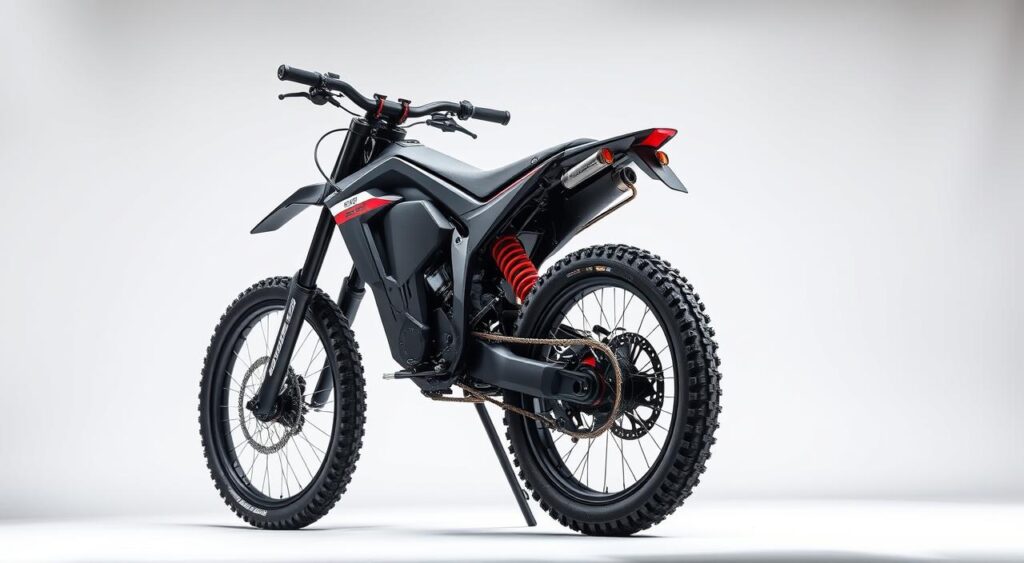
Despite its power, the Shockwave weighs only 120 kg. It has a 37mm telescopic fork and a monoshock for optimal handling and comfort on rough terrains.
Riding Experience and Comfort
The Shockwave offers a thrilling ride with responsive acceleration and smooth power delivery. It has traction control modes and dynamic regeneration for easy adaptation to different conditions. The dual-channel ABS and braking system ensure confident stopping power.
Comfort is key, with ergonomic seating and controls that reduce fatigue. The suspension setup absorbs shocks and vibrations, ensuring a plush ride on challenging trails.
Versatility for Different Terrains
The Shockwave is versatile, with dual-purpose tires for excellent grip on paved roads and loose surfaces. It’s perfect for city streets and remote off-road trails, delivering a confident and enjoyable ride.
Its off-road performance is enhanced by advanced technology features. The traction control modes and dynamic regeneration system ensure stability and control. This helps maximize battery efficiency for longer adventures.
Priced at Rs. 1.49 lakh for the first 1,000 units, the Shockwave is an attractive option for off-road enthusiasts. Bookings are open for Rs. 999, with deliveries starting in Q1 2026. It’s set to make waves in the Indian electric vehicle market.
Comparing the Tesseract Scooter and Shockwave E-bike
Ultraviolette Automotive’s Tesseract scooter and Shockwave e-bike cater to different needs. They offer unique riding experiences. Let’s compare their performance, price, and use.
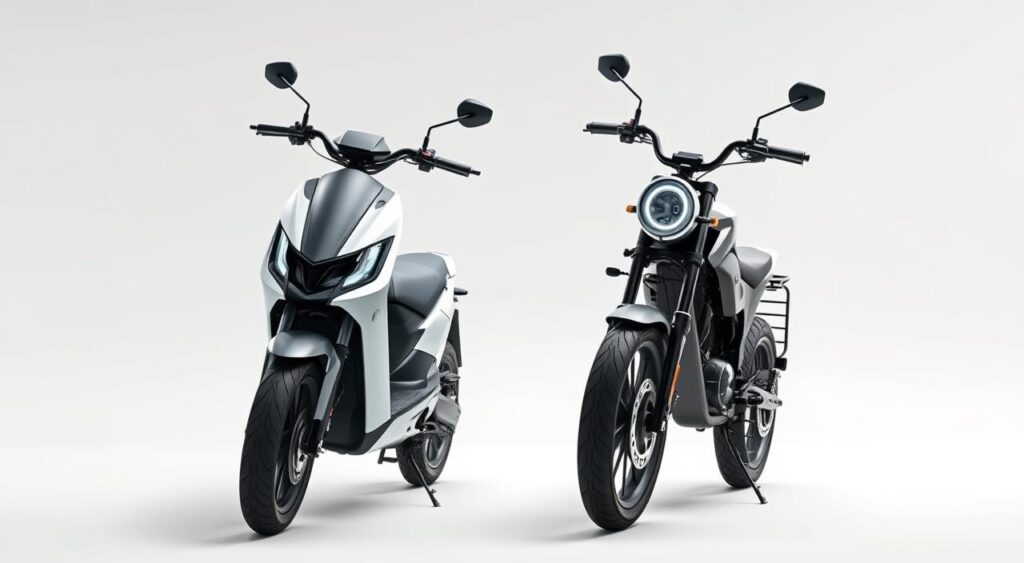
Performance Metrics
The Tesseract scooter is a powerhouse. Its top model, the Tesseract 6, has a 6 kWh battery and goes up to 261 km on a single charge. It zooms from 0 to 60 km/h in 2.9 seconds and hits 125 km/h top speed.
The Shockwave e-bike also impresses. It’s got a 10.6 kW electric motor and 505 Nm torque. It accelerates to 60 km/h in 2.9 seconds and tops out at 120 km/h.
| Performance Metric | Tesseract Scooter | Shockwave E-bike |
|---|---|---|
| Top Speed | 125 km/h | 120 km/h |
| Acceleration (0-60 km/h) | 2.9 seconds | 2.9 seconds |
| Range (IDC) | 261 km (Tesseract 6) | 165 km |
| Battery Capacity | 6 kWh (Tesseract 6) | Not specified |
Price Range and Value for Money
The Tesseract e-scooter starts at Rs 1,45,000 (ex-showroom). It’s priced at Rs 1,20,000 for the first 10,000 buyers and Rs 1,30,000 for the next 50,000. The Shockwave electric bike is launched at Rs 1,75,000 (ex-showroom). It’s priced at Rs 1,49,999 for the first 1,000 buyers.
Both vehicles offer great value. They balance performance, features, and quality well.
Target Audience and Usage
The Tesseract scooter is for urban commuters. It’s fast, feature-rich, and perfect for daily rides. It’s ideal for those who value convenience and style.
The Shockwave e-bike is for off-road lovers. It’s designed for thrilling rides on various terrains. Its powerful motor and advanced suspension make it great for outdoor adventures.
Environmental Impact and Sustainability
In the world of electric vehicles, Ultraviolette is leading the way towards sustainable transportation in India. They’ve introduced the Tesseract scooter and the Shockwave e-bike. These vehicles aim to meet the growing need for cleaner, greener options.
Ultraviolette goes beyond just making cars. They use eco-friendly methods in making their products. This includes reducing waste, using resources wisely, and using materials that can be recycled. Their goal is to lessen their impact on the environment at every step.
The Tesseract scooter and Shockwave e-bike help fight air pollution in cities. They run on electricity, not gasoline, making them a cleaner choice. By choosing these sustainable transportation options, people help make the air cleaner and reduce harmful emissions.
Eco-Friendly Manufacturing Practices
Ultraviolette is also focused on making their manufacturing green. They’ve started using practices that help the planet. Some of these include:
- Using resources wisely and cutting down on waste
- Using materials that can be recycled in their products
- Switching to renewable energy in their factories
- Improving their supply chain to cut down on emissions
Contribution to Urban Mobility Solutions
The Tesseract scooter and Shockwave e-bike are more than just vehicles. They’re part of Ultraviolette’s plan for a greener city. By making electric two-wheelers, they want to help people choose cleaner ways to get around.
These vehicles are made to fit well with city life. They have smart features and efficient batteries. This makes them a great choice for those who want to live more sustainably.
Battery Life and Charging Options
Electric vehicles rely on battery life and charging options. The Ultraviolette Tesseract scooter and Shockwave e-bike have impressive specs. They meet the needs of today’s riders.
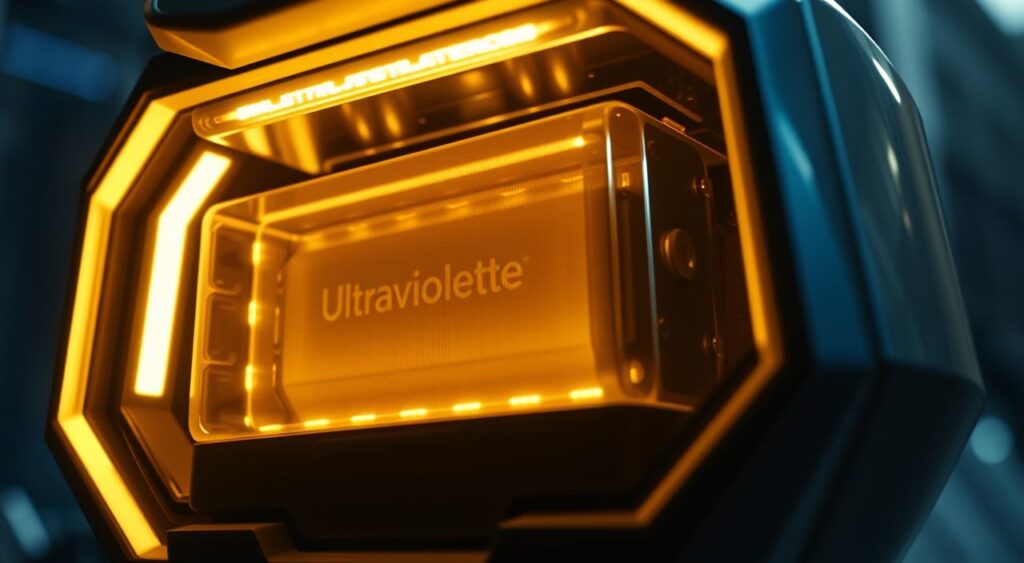
Tesseract Scooter Battery Specifications
The Ultraviolette Tesseract scooter has three battery packs. The 3.5kWh pack gives a range of 162 km. The 5kWh and 6kWh packs offer 220 km and 261 km ranges, respectively.
It can go up to 125 kmph, thanks to its 20bhp (15kW) power. Fast charging is a key feature. It charges to 80 percent in just one hour.
Ultraviolette backs the battery with an 8-year or 2 lakh kilometre warranty. This gives owners confidence in the battery’s long life and reliability.
Shockwave E-bike Battery Solutions
The Ultraviolette Shockwave e-bike has a 3.5kWh battery. It offers a range of 165 km on a single charge. It can reach 120 kmph, making it great for city and off-road rides.
| Model | Battery Capacity | Range (IDC) | Charging Time (0-80%) |
|---|---|---|---|
| Tesseract (3.5kWh) | 3.5kWh | 162 km | 1 hour |
| Tesseract (5kWh) | 5kWh | 220 km | 1 hour |
| Tesseract (6kWh) | 6kWh | 261 km | 1 hour |
| Shockwave | 3.5kWh | 165 km | – |
The Tesseract scooter and Shockwave e-bike show Ultraviolette’s focus on electric vehicles. They offer great range, fast charging, and a strong battery warranty. These features make them ideal for efficient and eco-friendly travel in India.
Safety Features of Ultraviolette Vehicles
Safety is key in electric vehicles, and Ultraviolette takes it seriously. Their Tesseract Scooter and Shockwave E-bike come with top-notch safety tech. These features give riders peace of mind on the road.
The Tesseract Scooter’s ARAS 360 full-circle radar system is a standout. It watches the surroundings in real-time, giving a full view of hazards. The radar and dashcam work together to alert riders to obstacles. The blindspot detection and lane change assist make riding safer and easier.
The Tesseract Scooter also has a combined braking system for better stopping. It recovers up to 15% of energy during braking. This makes braking smoother and safer. The anti-lock braking system (ABS) reduces skidding risk by up to 25% during emergency stops.
The Shockwave E-bike is also safe. It has a 4-star crash safety rating from Indian authorities. Its high-strength steel frame makes it 15% more rigid than other electric bikes. This gives riders confidence in its safety.
Advanced Safety Technologies
- ARAS 360 full-circle radar system
- Integrated radar and dashcam
- Blindspot detection
- Lane change assist
- Real-time collision alerts
- Combined braking system
- Regenerative braking
- Anti-lock braking system (ABS)
- High-strength steel frame
- Advanced thermal management system
User Reviews on Safety Performance
Users love the safety of Ultraviolette vehicles. They praise the collision alerts and blindspot detection. These features have helped them avoid accidents.
The lane change assist gets thumbs up too. Users feel more confident and guided when changing lanes. The advanced thermal management system is also a hit, reducing overheating risks by 30%.
Both vehicles have a minimum ground clearance of 165 mm. This is 10% higher than average electric scooters in India. Users find this extra clearance makes riding safer and more comfortable, even on rough roads.
User Experience and Community Feedback
Ultraviolette’s electric vehicles are making waves, and feedback is key. The Tesseract scooter and Shockwave e-bike are getting lots of attention. They offer unique experiences for different riders.
Testimonials from Tesseract Owners
Tesseract owners love its advanced features and fast performance. The top model can hit 60 kmph in 2.9 seconds. They also appreciate the up to 261 km range, making long trips worry-free.
The scooter’s smart tech, like the 7-inch screen and ADAS, adds to the joy of riding. Features like blind spot detection and lane change assist make it safer and more comfortable.
Feedback from Shockwave Riders
Off-road fans and adventure lovers are excited about the Shockwave e-bike. It has 505 Nm of torque and can go from 0 to 60 kmph in 2.9 seconds. Riders say it’s great for different terrains thanks to its dual-purpose tyres and adjustable suspension.
Many are happy with the Shockwave’s road-legal status and the option for a two-seater. Its 165 km range per charge is also a big plus, giving riders freedom to explore without worrying about running out of power.
| Model | Top Speed | Range | 0-60 kmph |
|---|---|---|---|
| Tesseract 6 | 125 kmph | 261 km | 2.9 seconds |
| Shockwave | 120 kmph | 165 km | 2.9 seconds |
Market Position and Competition
Ultraviolette, a Bangalore-based electric vehicle startup, is making waves in the Indian electric scooter market. It offers high-performance scooters. The company faces stiff competition from established players like Ather Energy and Ola Electric.
Ultraviolette stands out with its cutting-edge technology and advanced safety features. The company’s flagship product, the Tesseract scooter, has a range of up to 261 kilometers on a single charge. It is powered by a 20.1 bhp electric motor, enabling it to accelerate from 0-60 kmph in just 2.9 seconds.
Competitors in the Electric Scooter Market
Ultraviolette faces tough competition from Ather Energy’s 450 Apex. The 450 Apex offers a range of 157 kilometers on a full charge from its 3.7 kWh battery pack. It has a top speed of 100 kmph and can accelerate from 0-40 kmph in 2.9 seconds, priced at ₹1.99 lakh (ex-showroom).
Ola Electric’s S1 Pro+ is another formidable competitor. It is available with 4 kWh and 5.3 kWh battery packs, with a range between 242 and 320 kilometers. The S1 Pro+ has a top speed ranging from 128 to 141 kmph and can accelerate from 0-40 kmph in 2.1 seconds. The price for the Ola S1 Pro+ ranges between ₹1.43 lakh and ₹1.70 lakh (ex-showroom).
| Scooter | Battery Capacity | Range | Top Speed | 0-40 kmph | Price (ex-showroom) |
|---|---|---|---|---|---|
| Ultraviolette Tesseract | 3.5 kWh, 5 kWh, 6 kWh | Up to 261 km | – | 2.9 sec (0-60 kmph) | ₹1.20 lakh (introductory) |
| Ather 450 Apex | 3.7 kWh | 157 km | 100 kmph | 2.9 sec | ₹1.99 lakh |
| Ola S1 Pro+ | 4 kWh, 5.3 kWh | 242-320 km | 128-141 kmph | 2.1 sec | ₹1.43-1.70 lakh |
| Vida V2 Pro | 3.9 kWh | Up to 165 km | 90 kmph | 2.9 sec | ₹1.15 lakh |
| River Indie | 4 kWh | Up to 161 km | 90 kmph | 3.7 sec | ₹1.43 lakh |
How Ultraviolette Stands Out
Ultraviolette differentiates itself with unique features and a competitive advantage in performance. The Tesseract’s impressive range and quick acceleration set it apart. The company focuses on advanced safety features, including short-circuit and over-voltage protection.
Ultraviolette also offers smart connectivity features like Bluetooth and LTE connectivity, and a 5-inch TFT touchscreen display. These features appeal to tech-savvy consumers. With its cutting-edge technology and performance-oriented approach, Ultraviolette is well-positioned to capture a significant share of the growing electric scooter market in India.
Future Innovations from Ultraviolette
The electric vehicle market in India is growing fast, with a 44% CAGR from 2020 to 2025. Ultraviolette is leading the way with future EV developments. They focus on cutting-edge technology and innovative features for their upcoming models.
Upcoming Models and Features
Ultraviolette has five series for different riders:
- F Series: Includes three vehicles, the F77 Mach 2 and F77 SuperStreet
- S Series: Features the Tesseract scooter
- L Series: Showcases the Shockwave e-bike
- B Series: Will receive two vehicles in the future
- X Series: Plans to introduce three vehicles, with details to be revealed later
This variety shows Ultraviolette’s dedication to a wide range of electric two-wheelers. They aim to meet various customer needs and riding styles.
Technological Advancements in Electric Vehicles
Ultraviolette is working hard to improve electric vehicle technology. They focus on better performance, range, and user experience. Some key advancements include:
| Advancement | Impact |
|---|---|
| Improved battery technology | Longer range and faster charging times |
| Lightweight materials | Enhanced performance and efficiency |
| Advanced connectivity features | Seamless integration with smartphones and wearables |
| Over-the-air updates | Continuous improvements and new features |
Ultraviolette uses cutting-edge technologies and innovative features to lead the EV industry. They aim to capture 10% of the electric two-wheeler market in India by 2025. This puts them at the forefront of future EV development in the country.
Conclusion and Buying Considerations
Choosing the right EV depends on your needs and preferences. The Ultraviolette Tesseract scooter and Shockwave e-bike cater to different needs. If you’re looking for a stylish, efficient ride for city streets, the Tesseract might be perfect. For those who love off-road adventures, the Shockwave is the better choice.
Making the Right Choice Between Tesseract and Shockwave
Think about how you plan to use the vehicle. Consider your commute, the terrain you’ll ride on, and how fast you want to go. The Tesseract is great for city rides, while the Shockwave is perfect for rough trails. Choose based on what matters most to you.
Importance of Test Rides and Local Dealerships
Test rides are essential before buying. They let you feel how each vehicle handles. Visit your local Ultraviolette dealership to see the models up close. They can answer your questions and help with the buying process.
Choosing between the Tesseract and Shockwave depends on your personal needs. By trying them out and getting advice from dealerships, you can make a smart choice. This ensures you’ll enjoy your new electric vehicle.
FAQ
What is the range of the Ultraviolette Tesseract scooter?
The Ultraviolette Tesseract has three battery packs: 3.5kWh, 5kWh, and 6kWh. It can go 162 km, 220 km, or 261 km on a single charge, depending on the battery.
How fast can the Ultraviolette Shockwave e-bike accelerate?
The Ultraviolette Shockwave can go from 0 to 60 kmph in just 2.9 seconds. This is thanks to its strong 14.5bhp electric motor.
What are the key safety features of the Ultraviolette Tesseract scooter?
The Tesseract has many safety features. It has an ARAS 360 full-circle radar system and a dashcam. It also has blindspot detection, lane change assist, and alerts for real-time collisions.
What is the charging time for the Ultraviolette Tesseract?
The Tesseract can charge from 0 to 80 percent in just one hour. It also comes with an 8-year/2 lakh kilometre battery warranty.
How does Ultraviolette contribute to sustainable transportation?
Ultraviolette is all about sustainable transport and eco-friendly making. With the Tesseract and Shockwave, they aim to cut down carbon emissions. They want to make cities cleaner in India.
What is the price range for the Ultraviolette Tesseract and Shockwave?
The Tesseract starts at Rs. 1.2 lakh for the base model. The Shockwave costs Rs. 1.75 lakh. Both offer great value in their categories.
What makes the Ultraviolette Shockwave suitable for off-road riding?
The Shockwave is great for off-road thanks to its traction control and ABS. It also has dynamic regeneration. Its light weight and strong motor make off-road fun.
How does Ultraviolette stand out in the Indian electric scooter market?
Ultraviolette is known for its fast vehicles, safety, and tech. The Tesseract’s range and Shockwave’s off-road skills make them stand out in the market.
